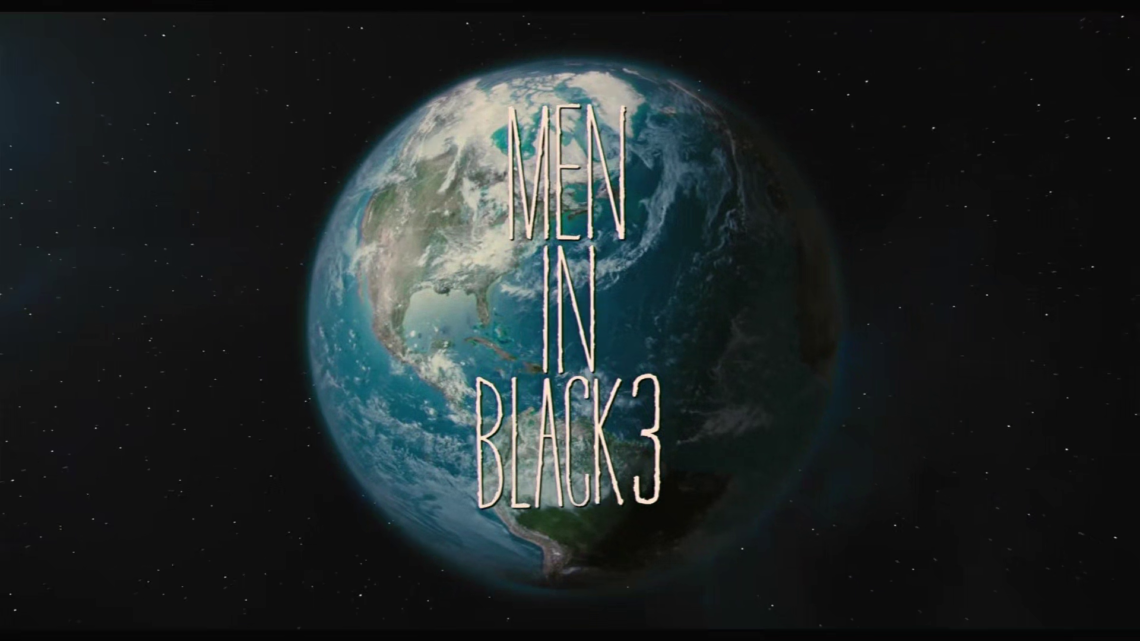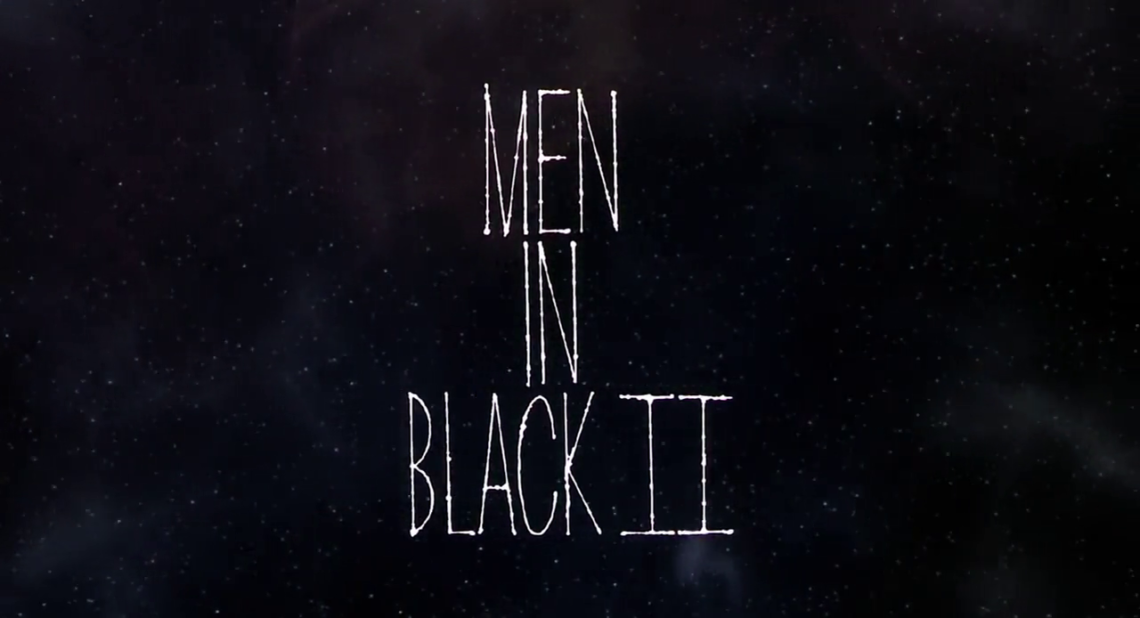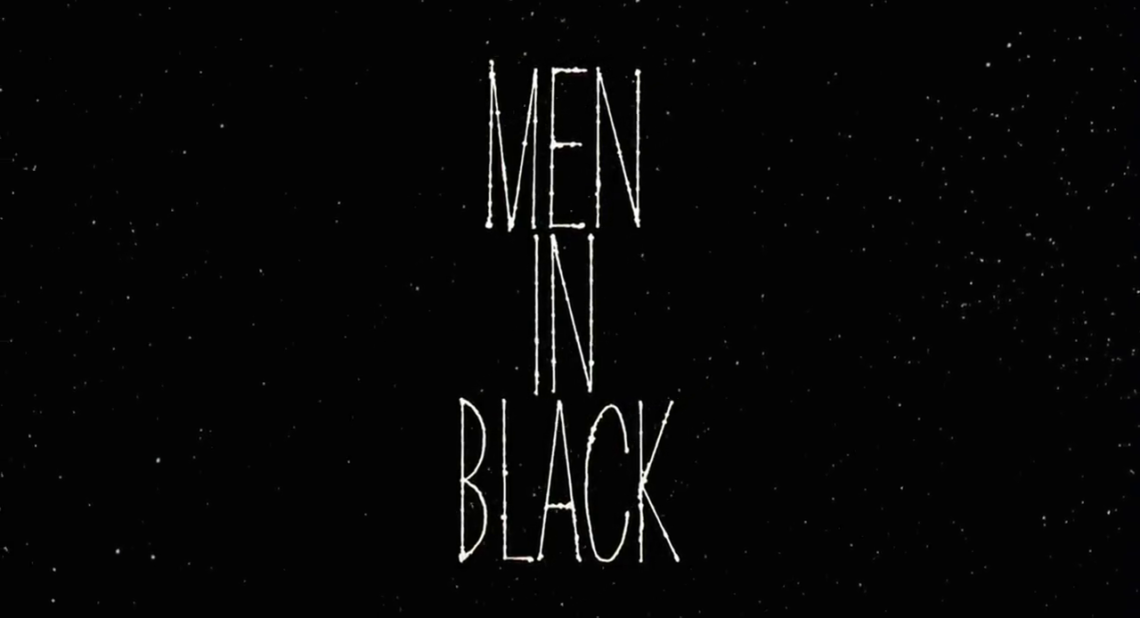-
#535 – Men in Black 3 (2012)
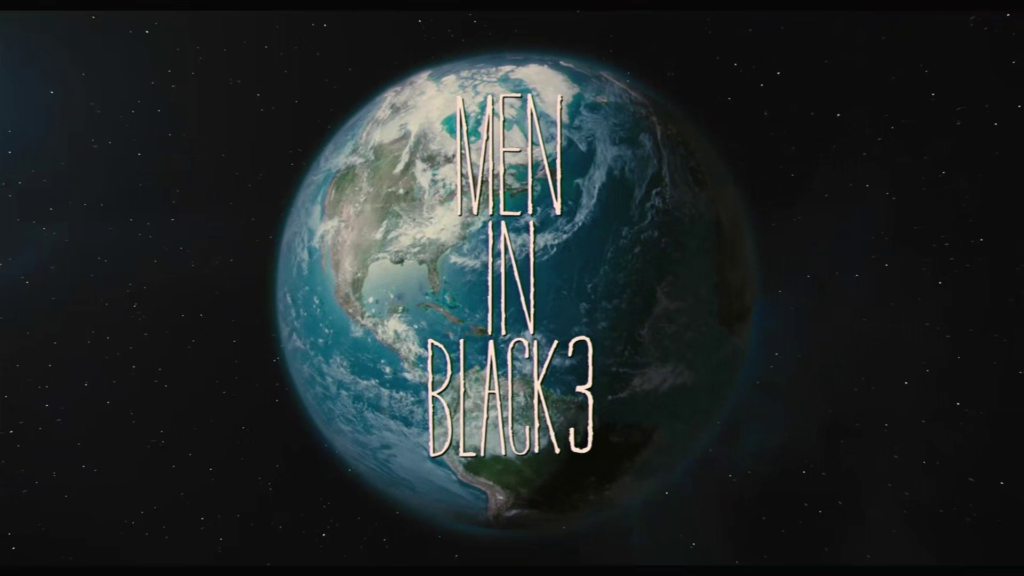
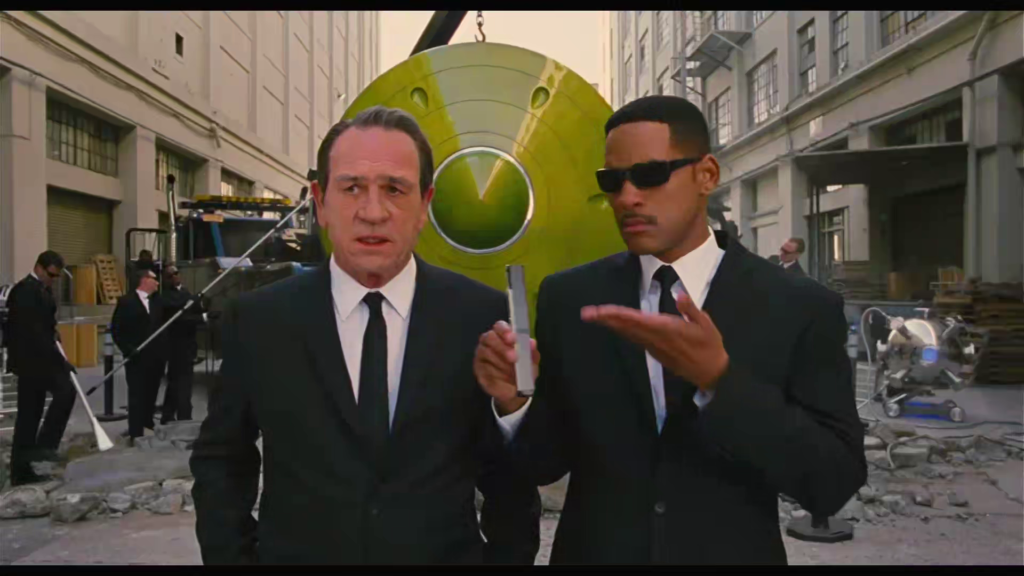
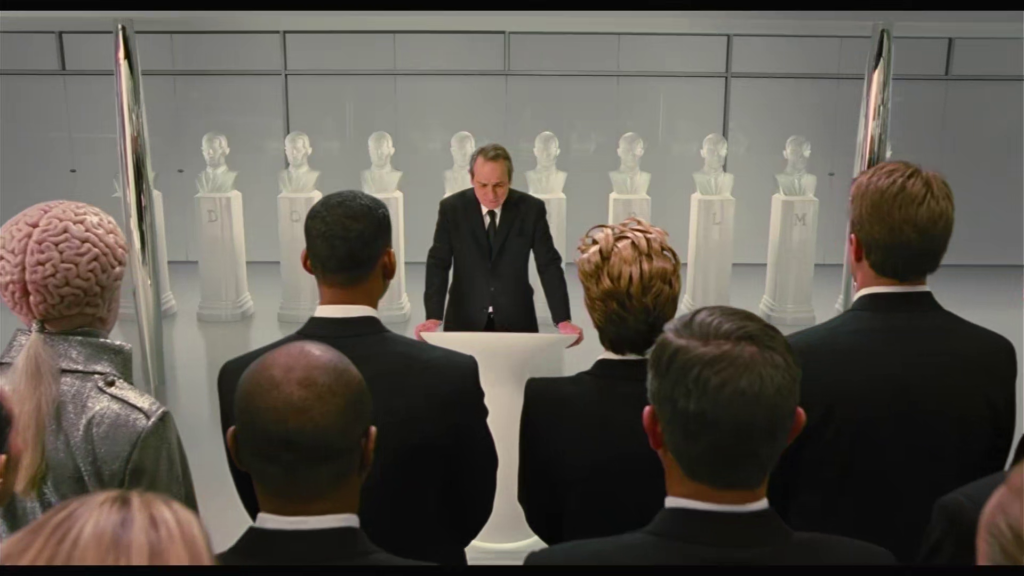
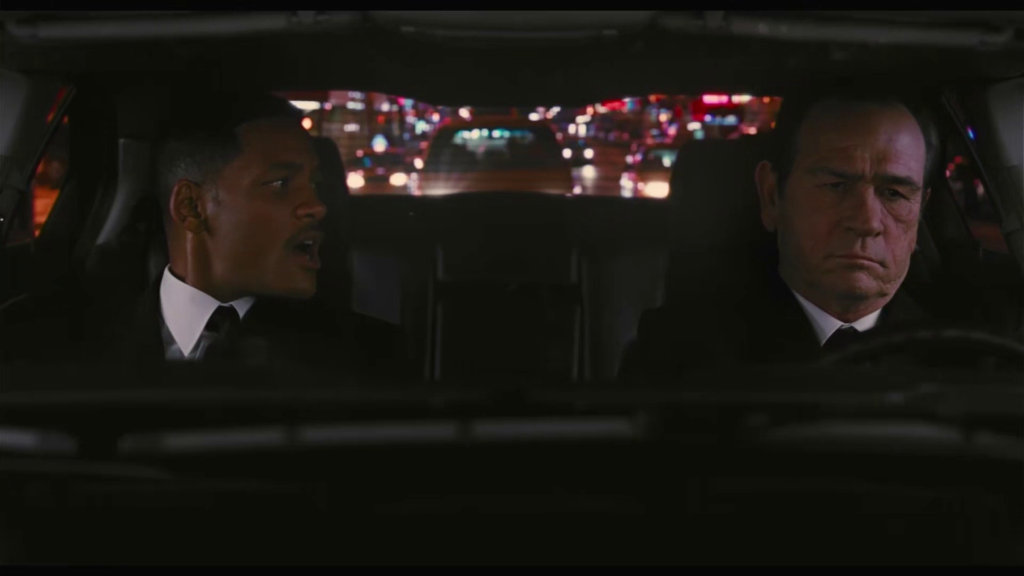
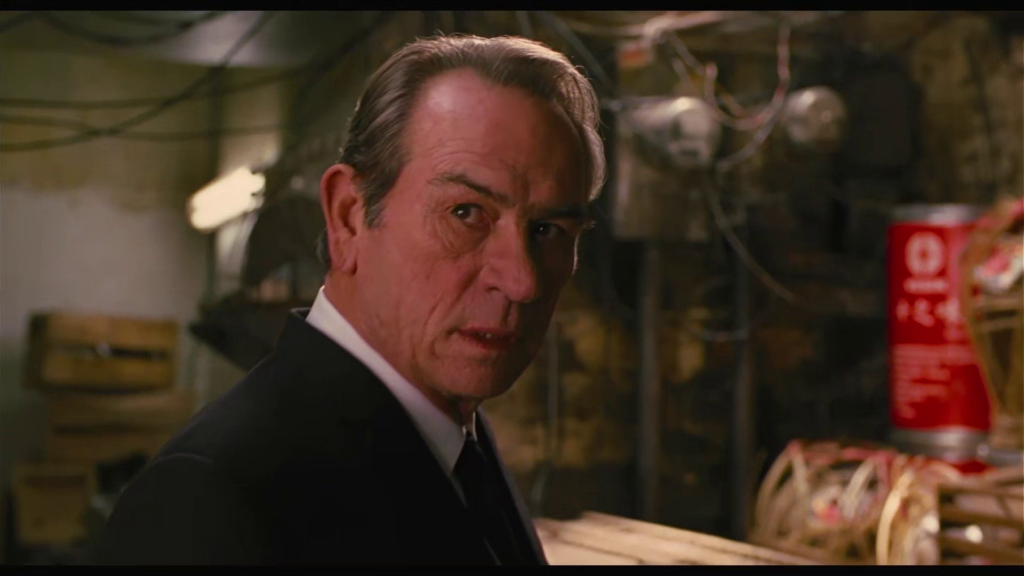
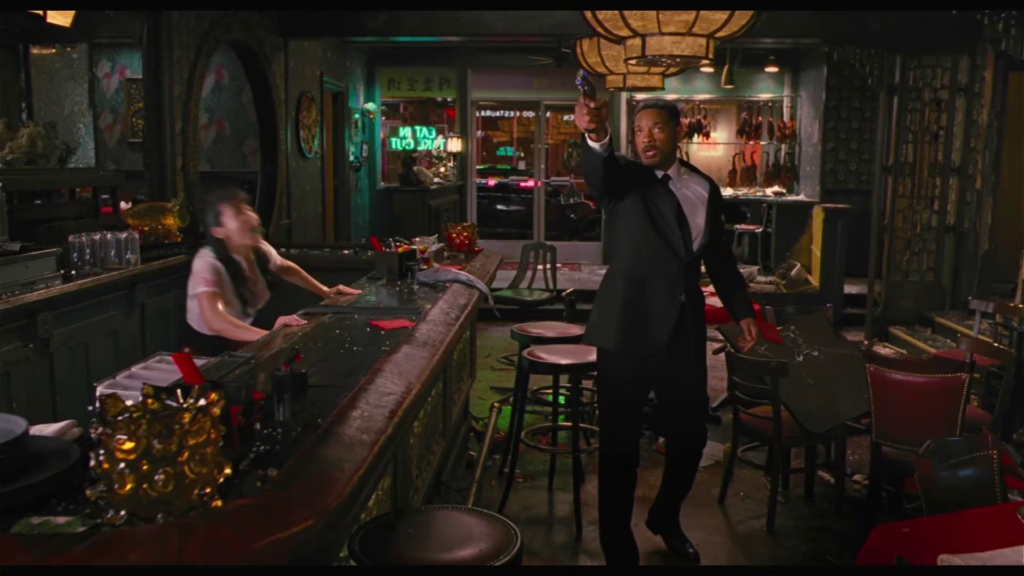
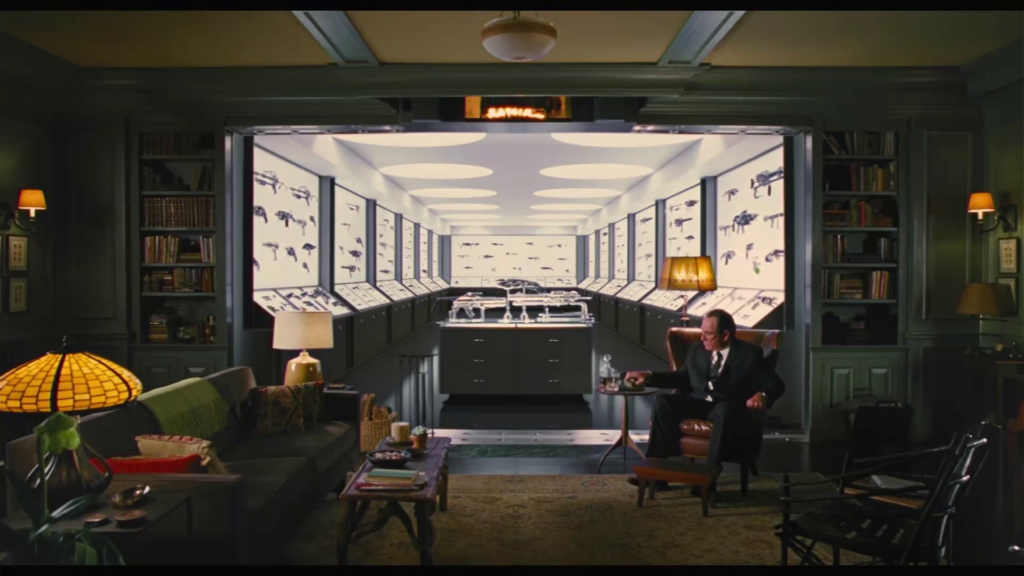
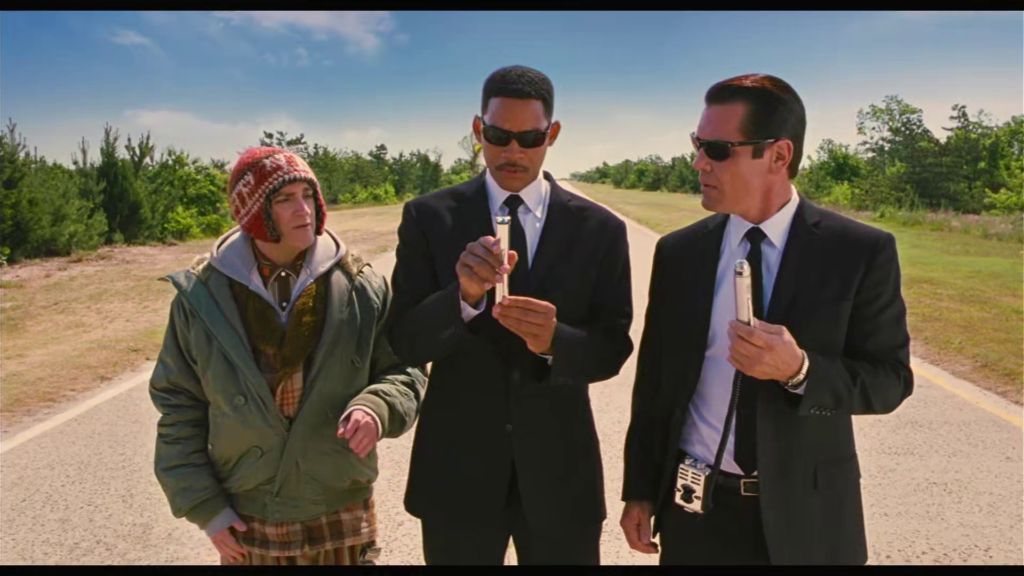
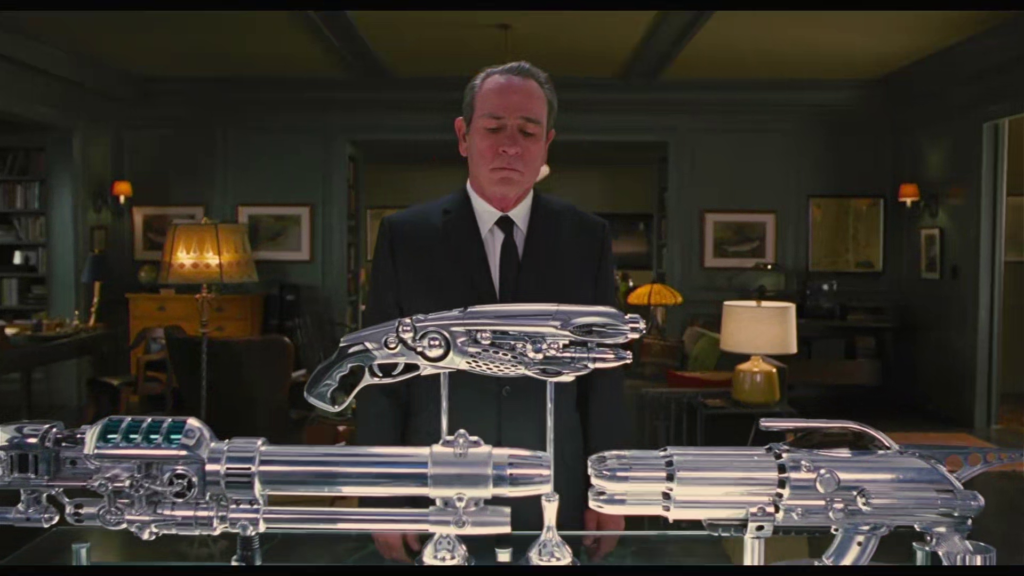
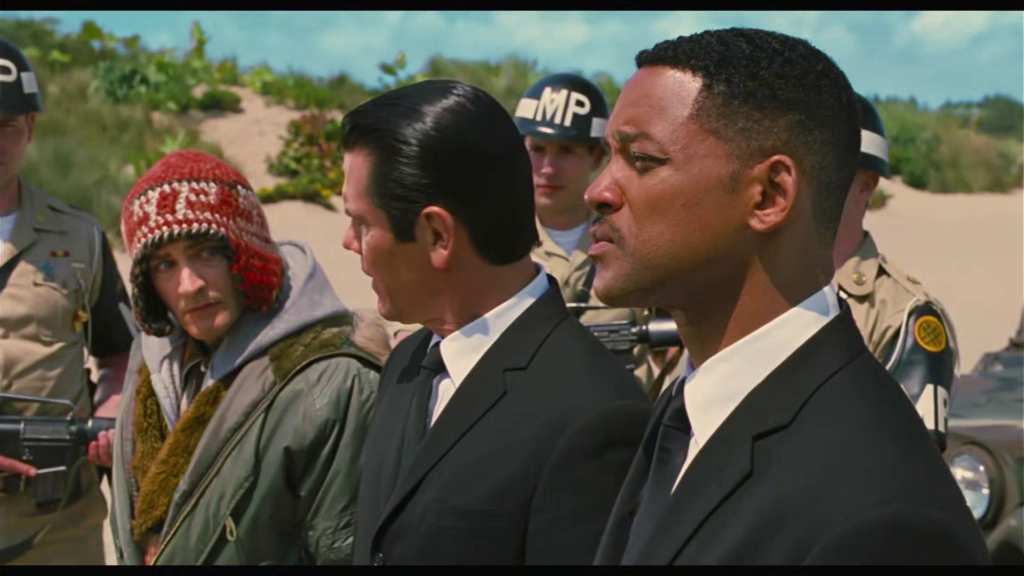
Men in Black 3 (2012)
Film review #535
Director: Barry Sonnenfeld
SYNOPSIS: Agents J and K are investigating an alien incident when they discover one of K’s old enemies, Boris, has escaped from his prison on the moon. J wakes up one morning to find out that K is gone, apparently having forty years ago. It seems Boris has travelled back in time and killed K, so J must also travel back in time to 1969 to prevent K’s death and stop Boris…
THOUGHTS/ANALYSIS: Men in Black 3 is a 2012 sci-fi film and the third in the Men in Black franchise, loosely based on the comics of the same name. The film opens up with a ruthless criminal, Boris (if that is his real name) escaping from his prison on the moon. He heads to earth to take his revenge on the agent who put him there: Agent K. To do so, he travels back in time to kill Agent K, so that his existence for the last 40 years is wiped out. Agent J must himself travel back to 1969 to stop Boris from accomplishing his plan, and save his partner. Bringing in time travel as the core mechanic, the plot has the potential to get very confusing very fast; but the film keeps it mostly simple, so everything stays together well: that’s not to say that there’s no questions surrounding some of the effects of time travel, because there is, but they don’t distract too much from the plot. The enemy this time is Boris, an alien who was imprisoned on the moon because he is such a menace. His whole plot again isn’t too important, and mostly serves as a catalyst to the main element of the film and the previous ones, which is the relationship between agents J and K. On this point, the film again gives us a solid and in-depth exploration of their characters and interactions, and while some of it is re-treading ground from the first two films, there is enough that is new and refreshing to make it worthwhile to sit through. The plot goes at a decent enough pace, and holds back enough mystery and suspense to make a decent payoff at the end, and enough energy along the way to sustain your attention until you get there. The film does gloss over many of the events of the first two films, and there’s some incongruities there, but on the other hand, it also makes this film easily a standalone feature, while still being an extension of what went before. Given the ten-year gap between this film and the previous one, it makes sense that the film can stand on it’s own, as some of it’s viewers will not have watched the first two, or simply forgot the particulars.
While the first film had a rather conventional relationship between J being the rookie, and K being the veteran agent; the second reversed this relationship by having J re-recruit K, which turned J into the veteran, but this reversal didn’t really work for a number of reasons (which I laid out in my review of the film). Men in Black 3 uses the time travel element to again reconfigure their relationship. J and K are essentially equals, but K still refuses to open up about his life. When J travels back in time to 1969, his relationship with young K is a bit more dynamic: J is the veteran, but he’s also a “fish out of water” in 1969, and K is the junior agent, but knows how everything works in that time, so neither of them are the rookie, but neither are they both the vets, so they’re on equal, but even footing, which gives their characters something new and interesting to explore throughout the film. Josh Brolin as young K does a really great job here: he captures Tommy Lee Jones’ K very well, while also putting enough of a spin on it to make it his own. Will Smith is still able to do what he does best getting into slapstick and humourous antics, but his maturity also lets him have some emotional moments too. The supporting characters and villain fill their roles well enough, but they’re nothing too special, but again, the series has always hinged on J and K’s relationship first, and alien invasions and agency bureaucracy second.
The film does a good job brining the 60′s Men in Black to life, with plenty of fun weapon and vehicle designs, and some creative aliens too. While the pop culture references in Men in Black II aged the film and didn’t really work, the time travel element gives the film more free reign to bring 60′s culture to life without aging the film itself. The ending of the film, which isn’t too hard to work out what’s going to happen when it gets underway, is nevertheless emotional and gripping, and feels like a good pay-off. I felt like maybe the film ends a bit too abruptly after though, as it generates all of these emotions, and never works through them to any degree, and so just leaves them hanging in the mind of the viewer with no outlet for them, but I think that others could easily be more satisfied with the ending, and so that point is probably more a matter of opinion than a critique of the film. Overall, Men in Black 3 is definitely an improvement over it’s predecessor, although Men in Black II lowered the bar a fair amount. It’s not a perfect film and still struggles with story outside of it’s core characters, but the film offers a fresh angle on exploring the relationship between the two main characters, while also still being fun and entertaining. Predictable in some parts, but still offers up enough fun and heart to be worth a watch for fans of the franchise, and tight enough to watch as a standalone film if you’ve never seen any of the others.
-
#534 – Men in Black II (2002)
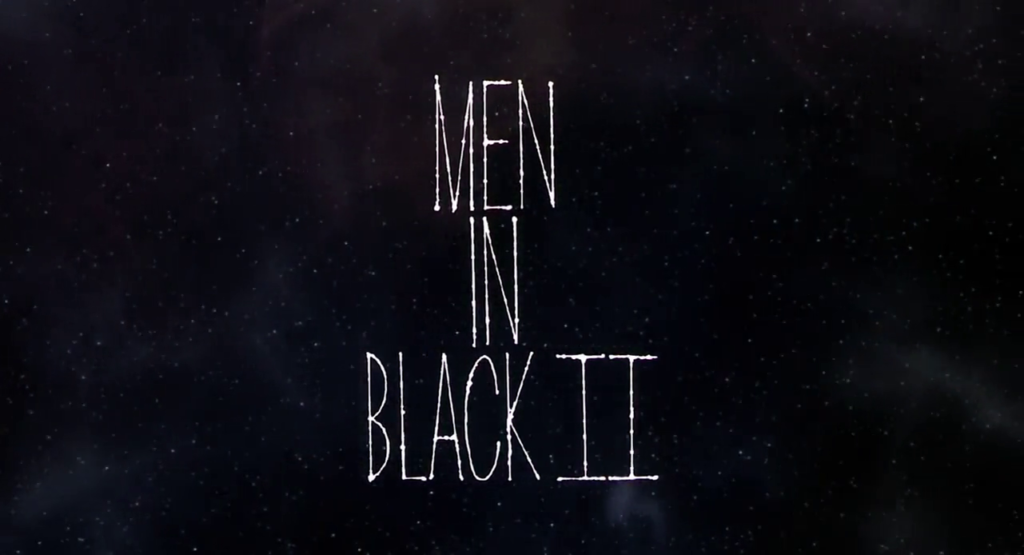
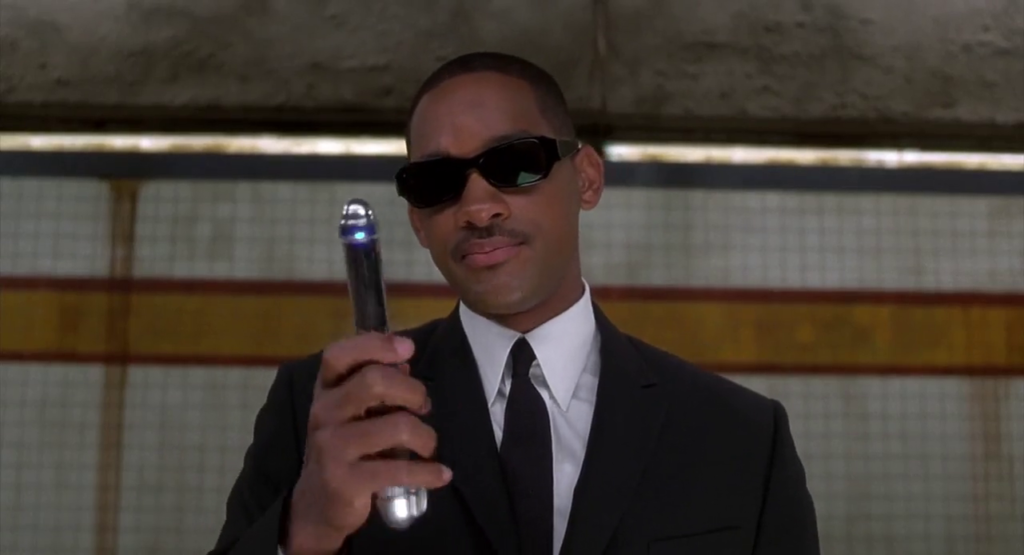
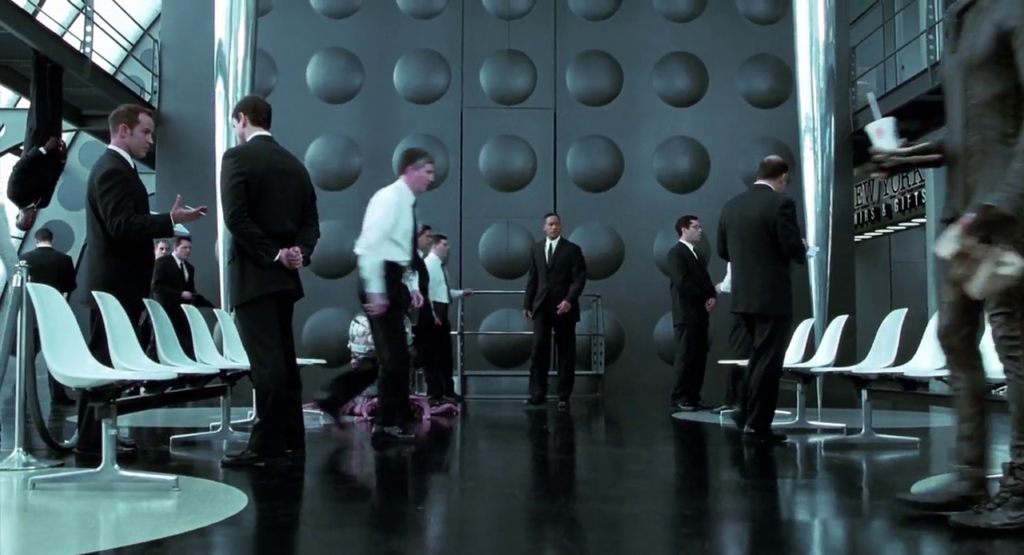
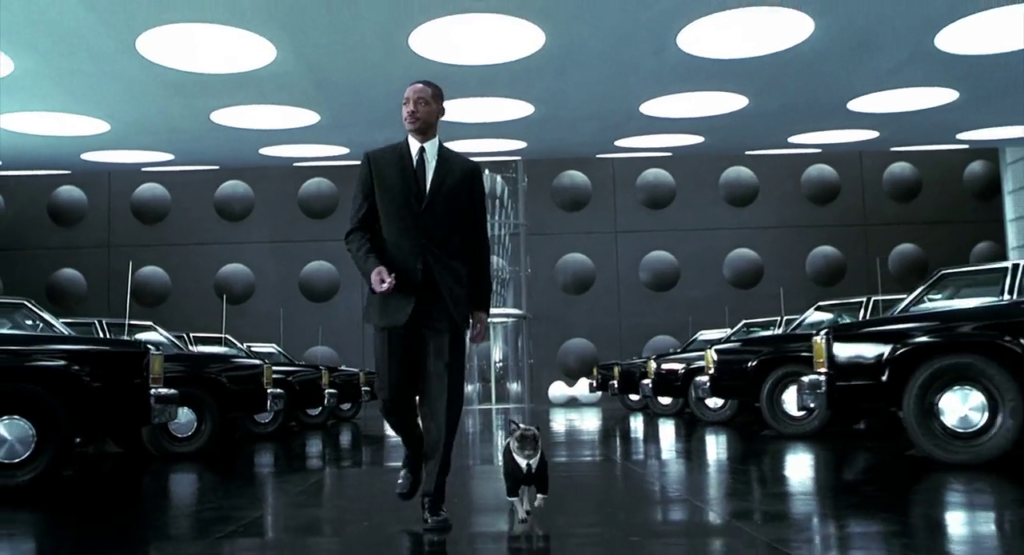
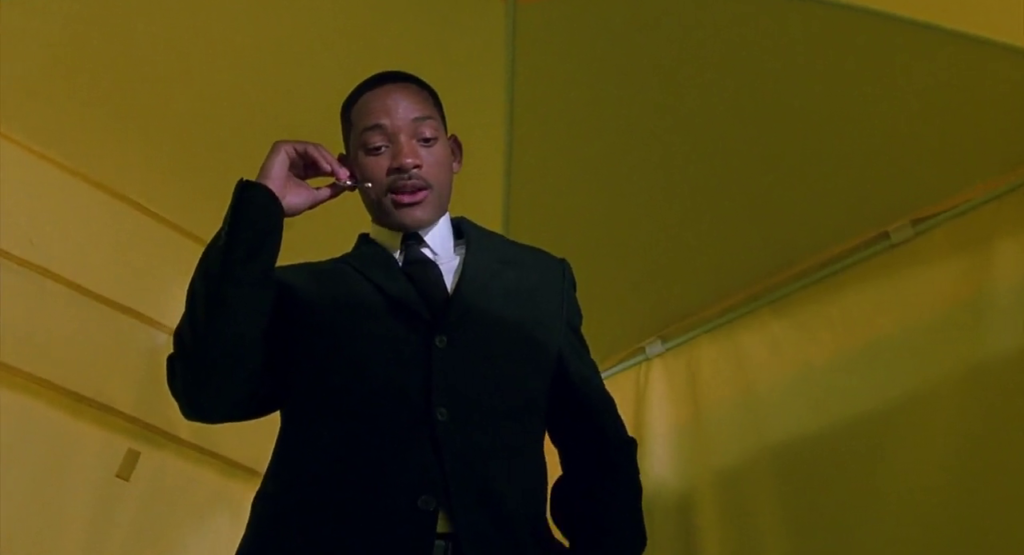
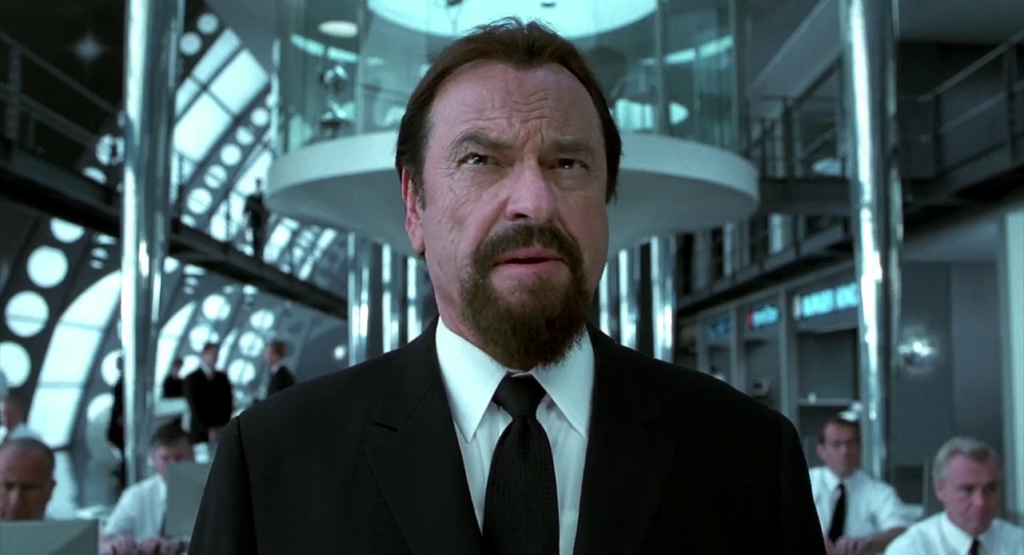
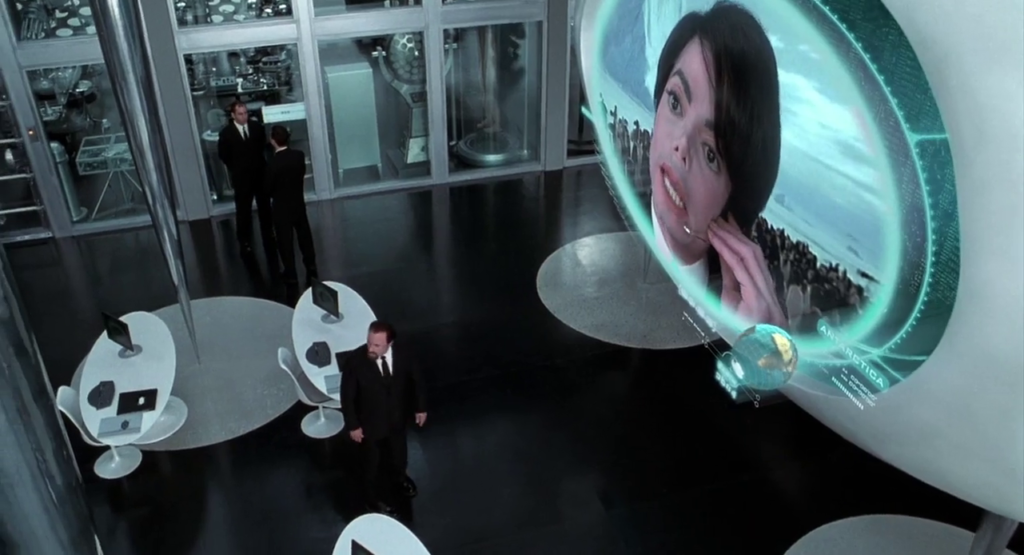
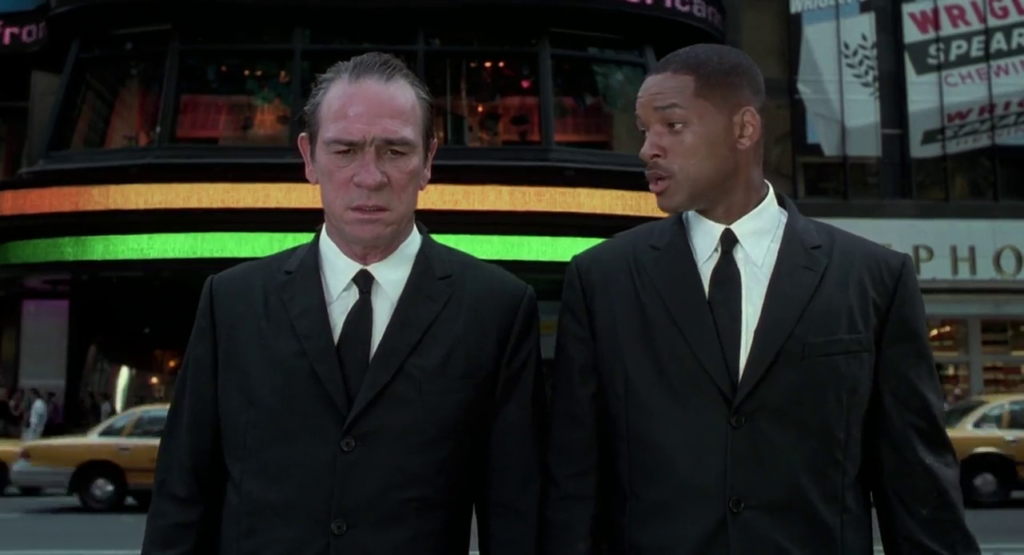
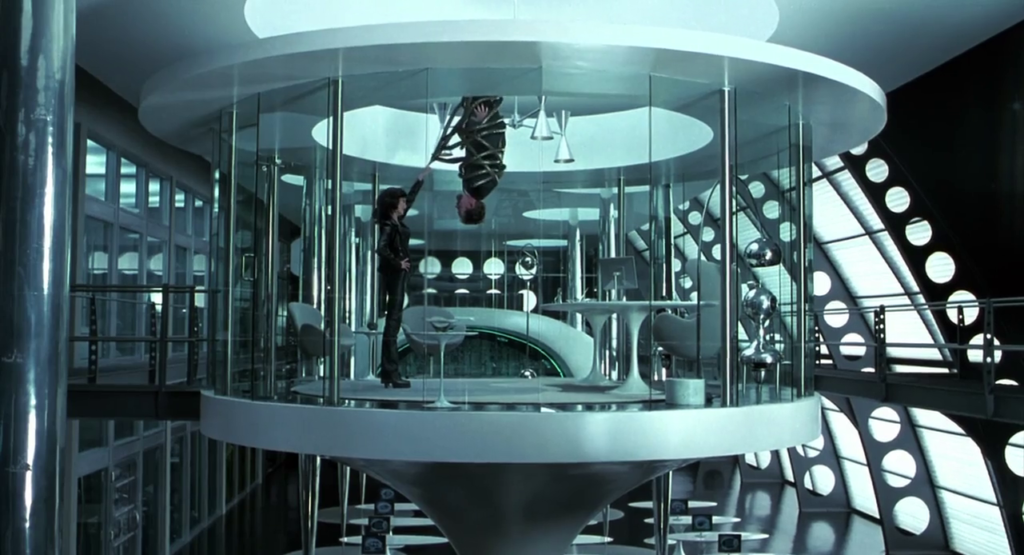
Men in Black II (2002)
Film review #534
Director: Barry Sonnenfeld
SYNOPSIS: Agent J is having trouble keeping an agency partner, as he feels like none of them are cut out for the job. When Serleena, an evil alien, comes to Earth looking for an artefact of immense power called the Light of Zartha, she will stop at nothing to acquire it. Unfortunately, the only person who knows where the light is hidden is Agent K, whose memories Agent J wiped five years ago when he neuralised him. Agent J goes to retrieve Agent K, somehow restore his memories, and hopefully save the world from an alien threat once again…
THOUGHTS/ANALYSIS: Men in Black II is a 2002 sci-fi film and the sequel to the 1997 film Men in Black. The film starts of with Agent J, who five years on from the events of the first film, has gone from a rookie to one of the top agents in the agency. He chases down Jeff, a monster worm who travels through the New York subway. J’s new partner T, seems to be not up to the job, and so J neuralises him and wipes his memory to lead a normal life. Agency leader Z laments J’s constant neuralising of his partners, including L, who became an agent at the end of the first film. Meanwhile, an alien named Serleena lands on Earth looking for the “Light of Zartha,” an energy source of immense power that was supposedly taken off Earth years ago, and she has been destroying planets across the universe looking for it. The only person that knows where it is is Agent K, who was neuralised himself, and so agent J must retrieve him and recover his memories before Serleena destroys everything.
The film’s structure and plot is very similar to the first time…a bit too similar. The film basically just role reverses the two main characters from the first film; with Agent J now being the veteran agent, and now Agent K without his memories is technically the rookie. You can see how this might be an interesting way to mix things up for the sequel and have the characters take on new roles, but it really is just a straight swap between them. Also, Will Smith doesn’t really work as the “straight” guy. Another problem with this is that when Agent K does get his memory back, the roles reverse again, and Agent J suddenly becomes the wisecracking rookie again, undoing all of his character development. This feels very much like a backwards step, although in some senses it is for the best, as the two can get into the roles that work properly for them. Going through all the trouble of getting K’s memories just to have them revert to the status quo is a pretty weak payoff though. The second element of the story concerning the “Light of Zartha” is again just a retread of the first film, in that the agents must find a small artifact that is actually a massive power source. There’s really nothing new that the film offers here.
Will Smith and Tommy Lee Jones are still appealing and entertaining in their roles, and still have great chemistry. The whole role reversal element doesn’t really do anything for their characters though. Frank the Pug takes the role of “rookie” before K returns, but it just doesn’t have the same dynamic, and relies very much on the repeated joke of Frank being a dog and that’s it. The supporting cast of Z and the worms make a return and are fine in their roles, and there’s a strange cameo by Michael Jackson who wants to be “Agent M,” which I’m not really sure what to think of. A lot of the pop culture gags, such as this and Frank’s barking to “Who Let the Dogs Out” definitely ages the film more than anything else. Serleena as a villain is quite boring and underwhelming, both from being very similar to the first film’s villain, and Lara Flynn Boyle’s dry and uninterested delivery just doesn’t work. Johnny Knoxville’s character, serving as Serleena’s henchman, is pretty underwhelming and annoying too: he also just…vanishes near the end of the film, making him seem extremely pointless. The tone of the film is a bit all over the place: the added pop-culture references, as mentioned, definitely age the film, and while some elements of the film feel a bit more geared towards younger audiences, there’s also a few darker elements that are definitely intended for older viewers, so it’s hard to pin down the overall feel of the film. The pop culture references were apparently added in by Barry Fanaro, who revised the first draft of the script, and this is something the original writer, Robert Gordon, avoided doing, which I think he was right about. Fanro did apparently reintroduce Agent K earlier in the film with his revisions, so that’s definitely a plus for him. The director, Barry Sonnenfeld, also took issue with the love story element between Agent J and Laura, because Will Smith doesn’t work as the serious guy (at that time anyway). This very much seems like a film in which no real vision got it’s way, and the conflicts at all these levels compromises in a very safe repeat of the first film.
Overall, Men in Black II definitely has some entertaining elements, and is held together by the main cast and their chemistry. A confusing mix of tone and visions from multiple people involved really hamper the film’s ability to drive the franchise forward, and supported by a weak cast of minor characters and cheap gags, you’ll be left feeling that you haven’t gained anything from watching this film. It’s perhaps worth a watch once, but the first film does everything better.
There’s perhaps one thing about the sequel (controversially) that I will say surpasses the first film though: I prefer the theme “Nod ya Head” to the “Men in Black” song from the first one. I’m sure that will make me some enemies.
-
#533 – Men in Black (1997)
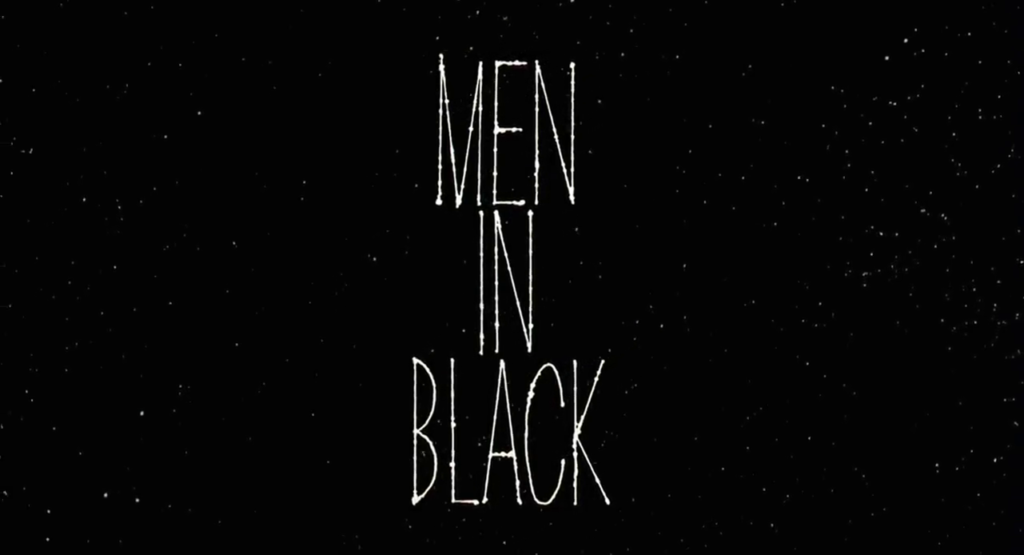
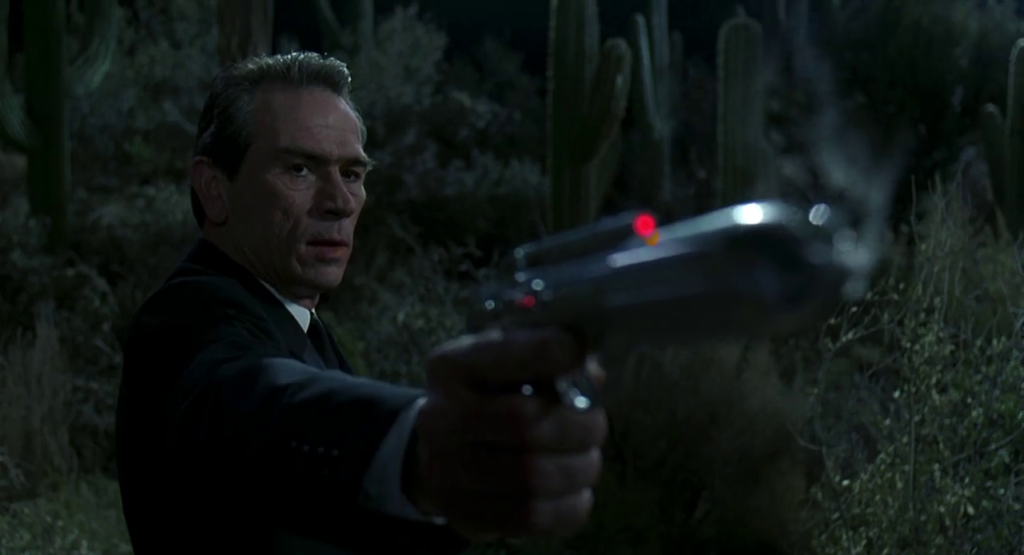
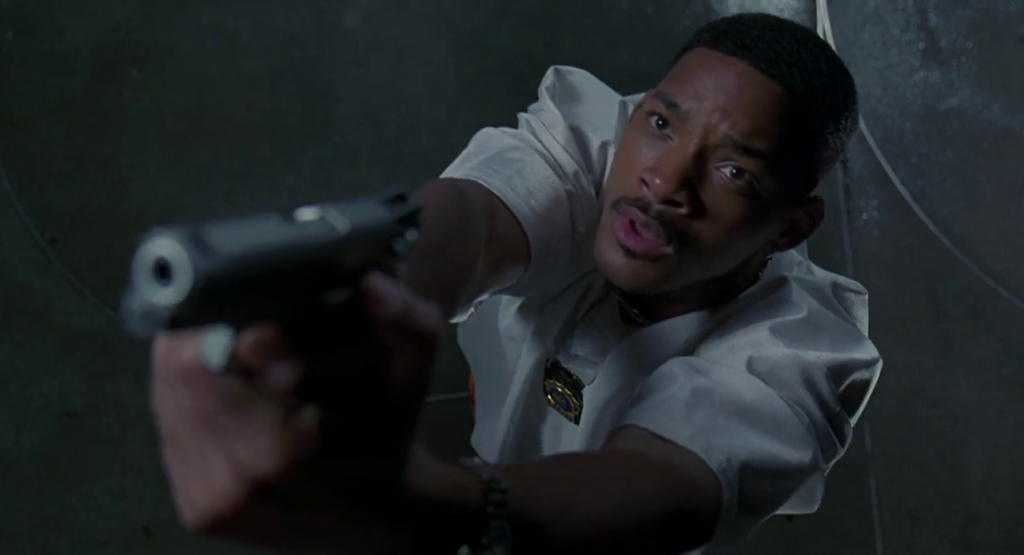
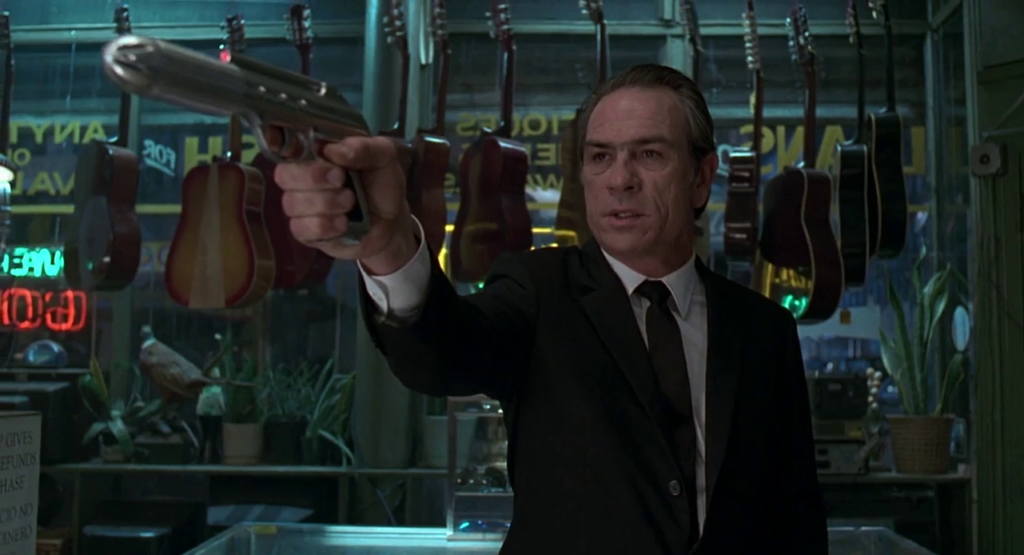
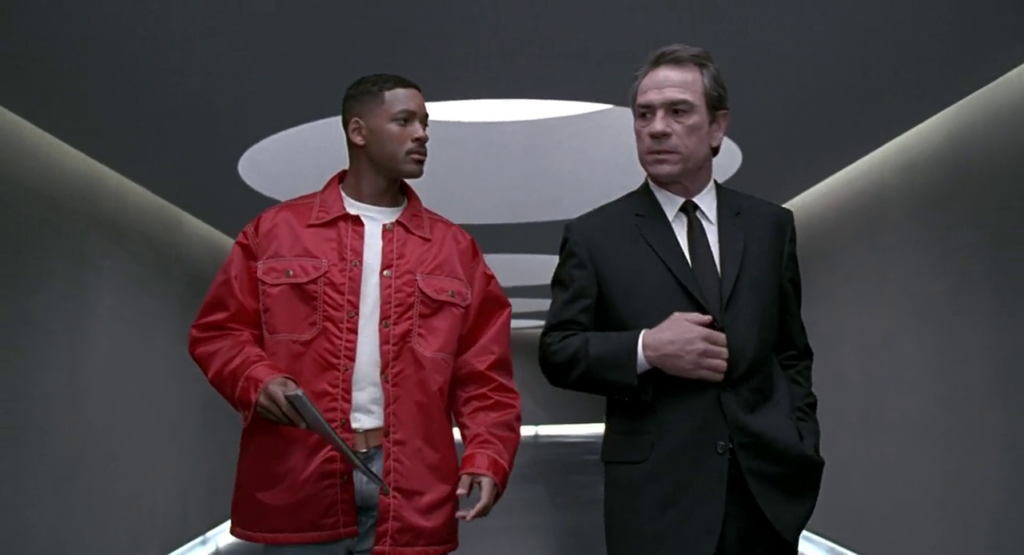
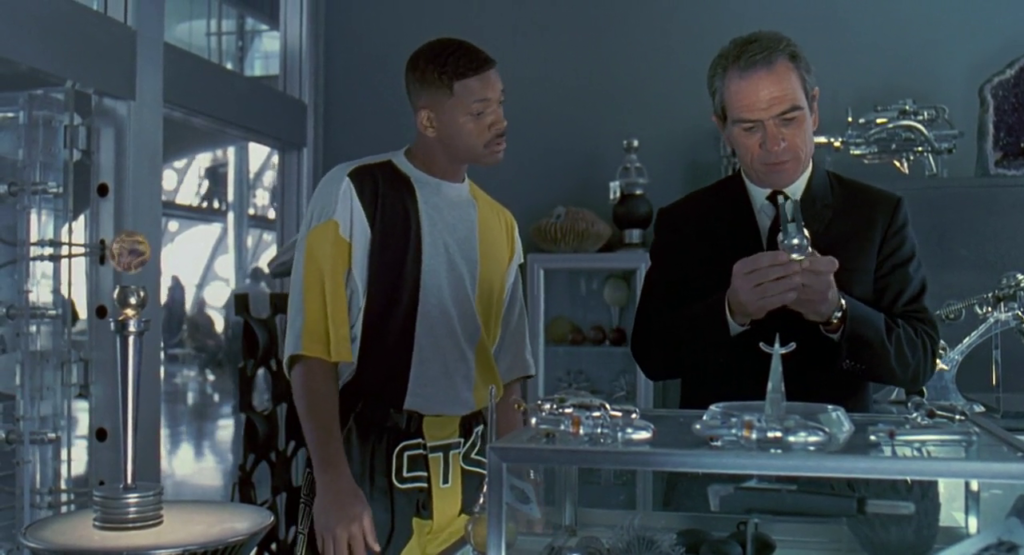
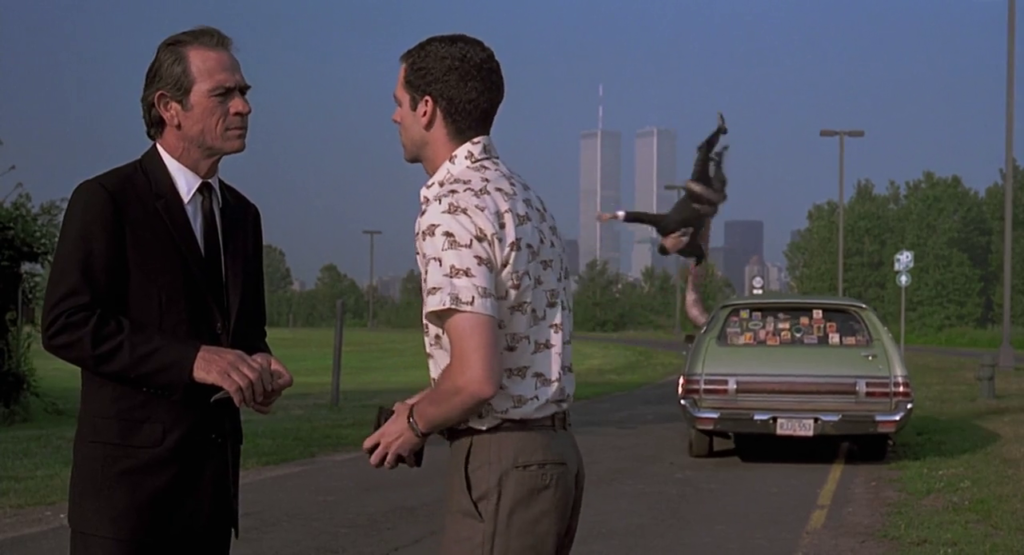
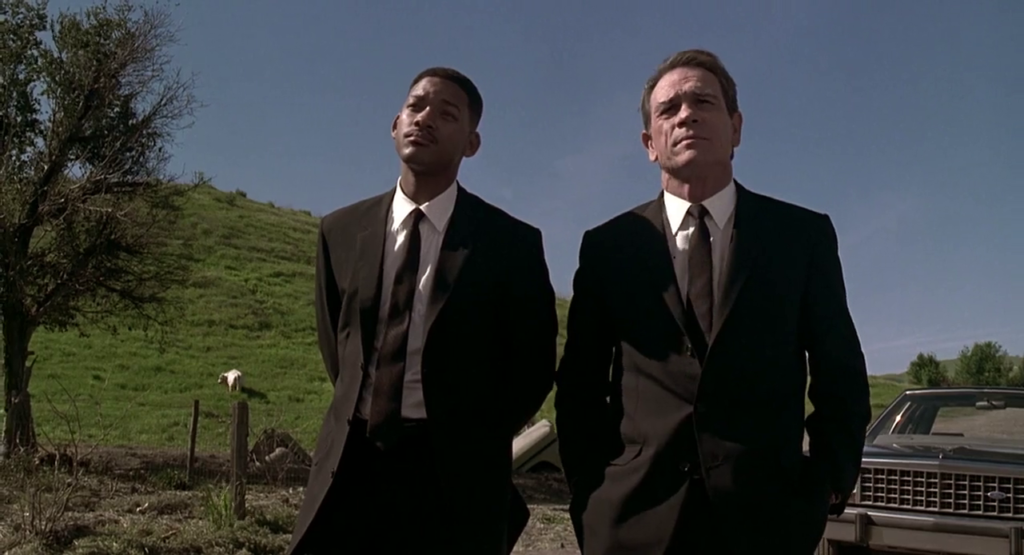
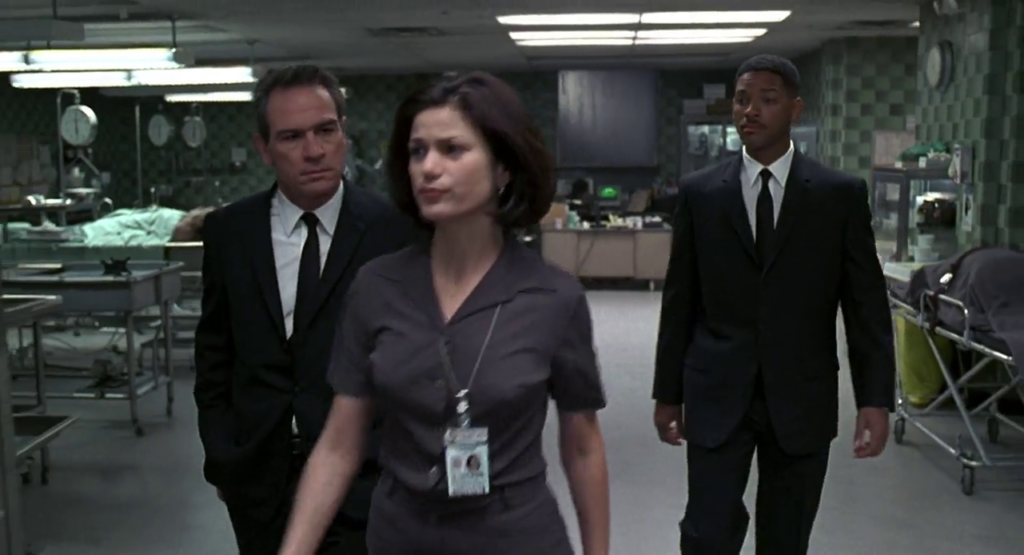
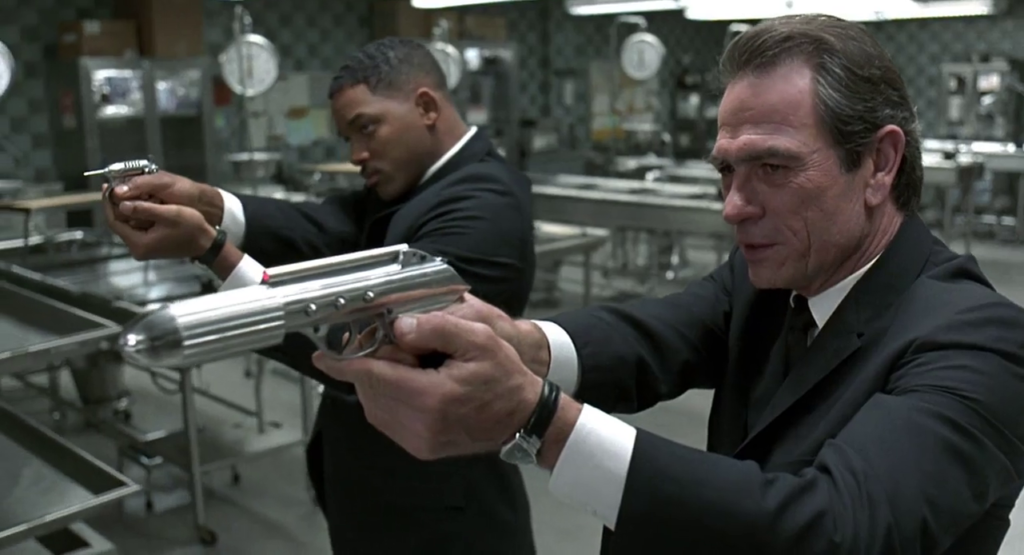
Men in Black (1997)
Film review #533
Director: Barry Sonnenfeld
SYNOPSIS: N.Y.P.D. detective James Edwards chases down a criminal that turns out to be an alien, but no one believes him, until a mysterious man dressed in black turns up, and ultimately wipes his memory. He does however, give him the chance to prove himself, and James becomes Agent J, the newest member of the Men in Black, a secret organisation that monitors and regulates alien activity on Earth. Meanwhile, an intergalactic threat that endangers the Earth emerges, and agents J and K must stop the alien menace and prevent the planet’s destruction.
THOUGHTS/ANALYSIS: Men in Black is a 1997 sci-fi film loosely based on the comic series of the same name. The film centres around a secret organisation (unsurprisingly) called the Men in Black: who monitor and regulate alien activity on Earth, while keeping their existence hidden from the public. NYPD detective James Edwards chases down a suspect which turns out to be an alien in disguise, but no one believes him. That is, until a man dressed in a black suit arrives and confirms his suspicion that aliens are real. The man wipes James’ memory, but gives him the opportunity to join the Men in Black. The best part of the film is definitely between agents J and K, as Will Smith and Tommy Lee Jones fit in to their roles perfectly, and their chemistry is very entertaining. It’s perhaps a bit cliché with J being the streetwise, wisecracking cop, and K being the dry-humoured, grizzled veteran, but they definitely make the roles their own, and together they just work so well. The supporting cast also fit their roles well, and have very specific roles to play. The other plotline other than Agent K training J is one that involves a bug-like alien attempting to find a miniature galaxy that doubles as an energy source, and a diplomatic incident that threatens to end in the earth’s destruction. It’s not as interesting a plot point than J and K’s development, and when the film moves towards the climax, the film does lose focus a bit. Nevertheless, it’s still an entertaining ride, and a comfortable runtime so that it doesn’t overstay it’s welcome.
The film makes considerable effort to create it’s world, and the sets, designs and effects all help build it up into something imaginative and fun. The Men in Black headquarters, and their weapons and gadgets are slick, the alien designs are varied and obviously have had a lot of effort put into them, and although the CG has obviously aged a bit since 1997, it still looks decent and doesn’t disrupt the enjoyment of the film. Add to this the recognisable soundtrack by Danny Elfman, and you have a very competent production all round. Apart from the film losing momentum near the end, Men in Black is a fun, entertaining film that gets the best out of it’s cast and those behind the scenes. It was also successful enough to launch a franchise, including sequels, an animated series, and video games. The film opens up plenty of possibilities to be explored, but never gets too heavy with the lore and exposition, and focuses on being an entertaining film that, while leans a lot on the buddy-cop trope and the rookie partnered with a veteran, it has enough of a twist on it, and amplified by the lead’s chemistry, it feels fresh enough. It still holds up as a good film with enough humour and action to make it worth a watch if you’ve never seen it before.
-
#532 – Lobster Man from Mars (1989)
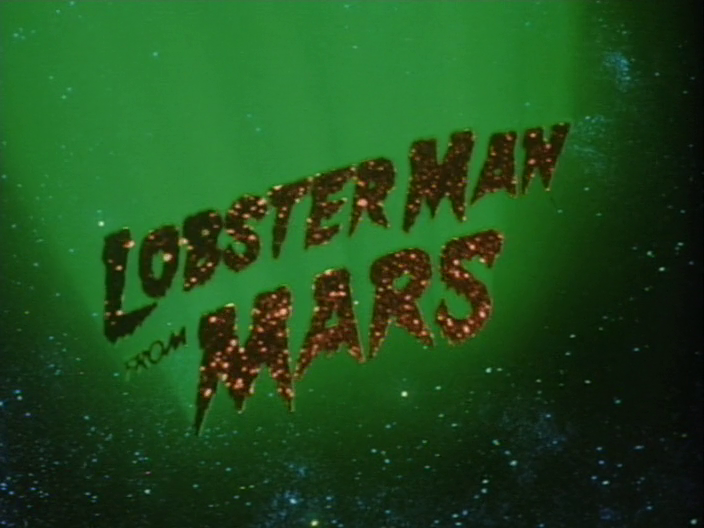
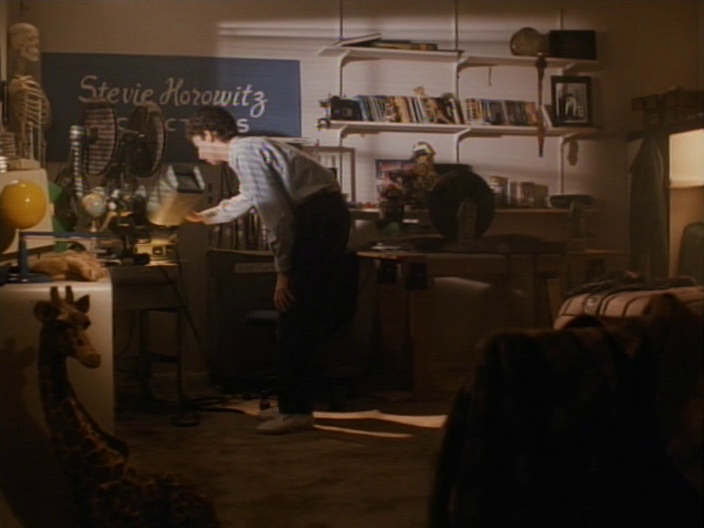
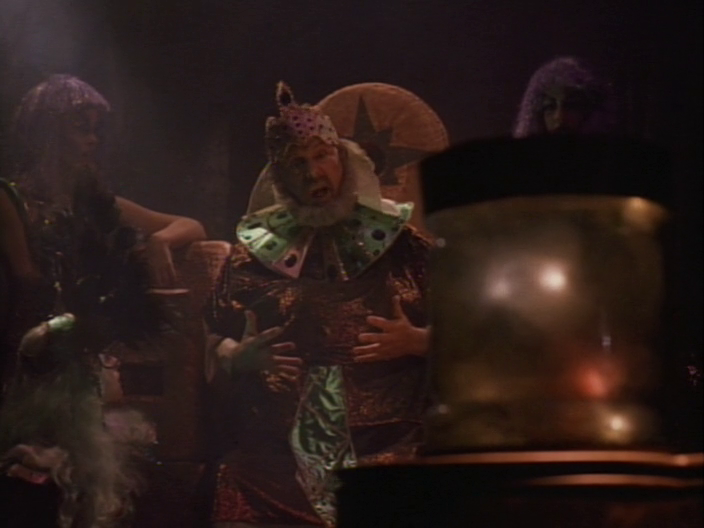
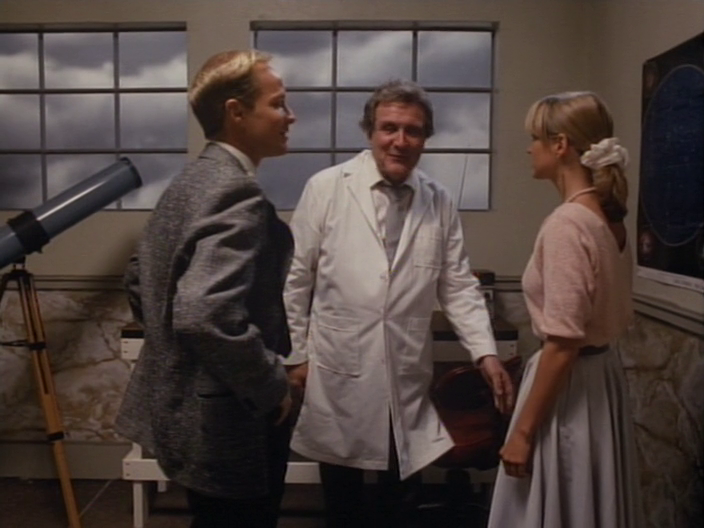
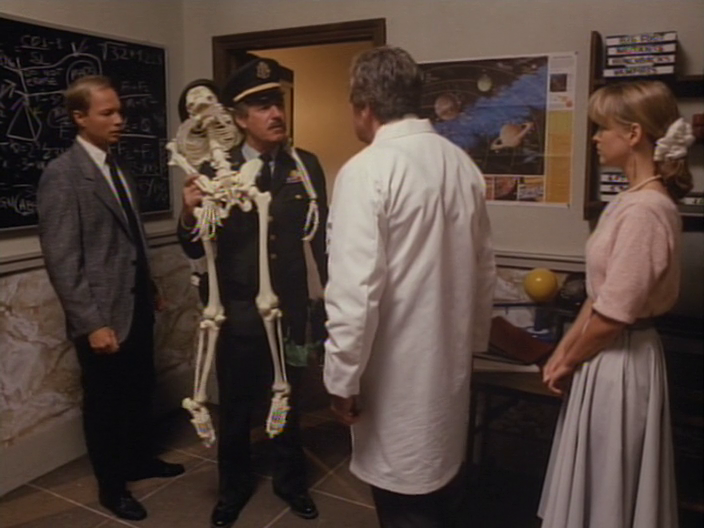
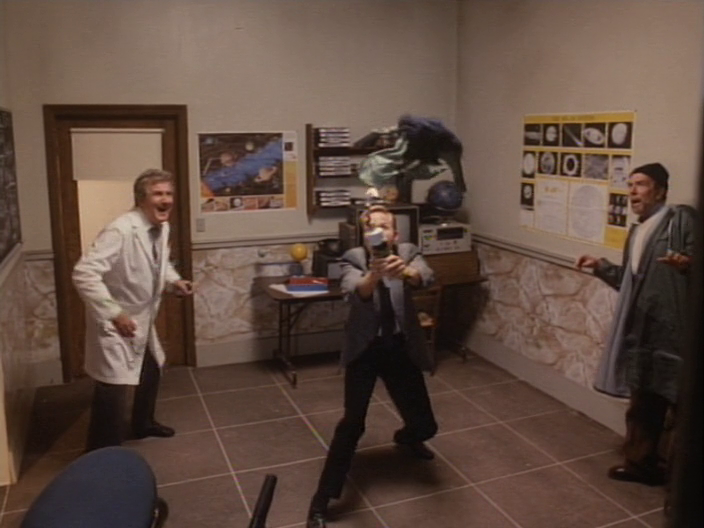
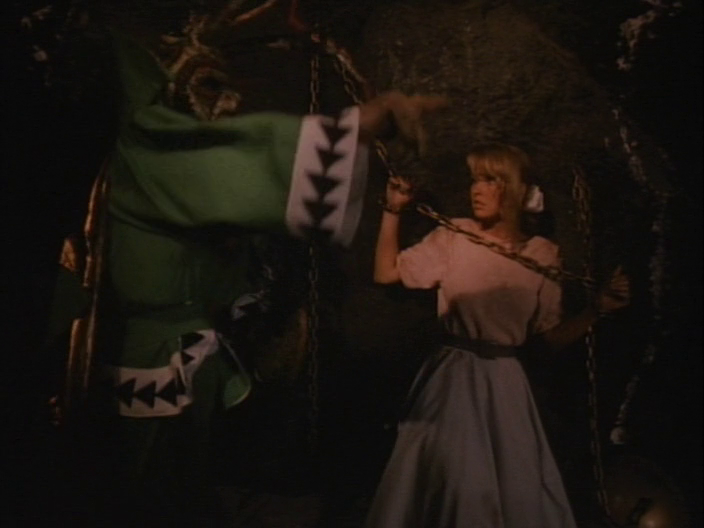
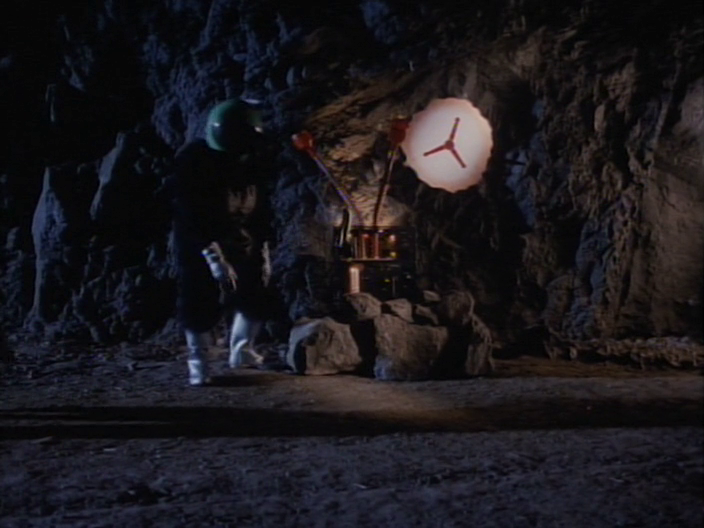
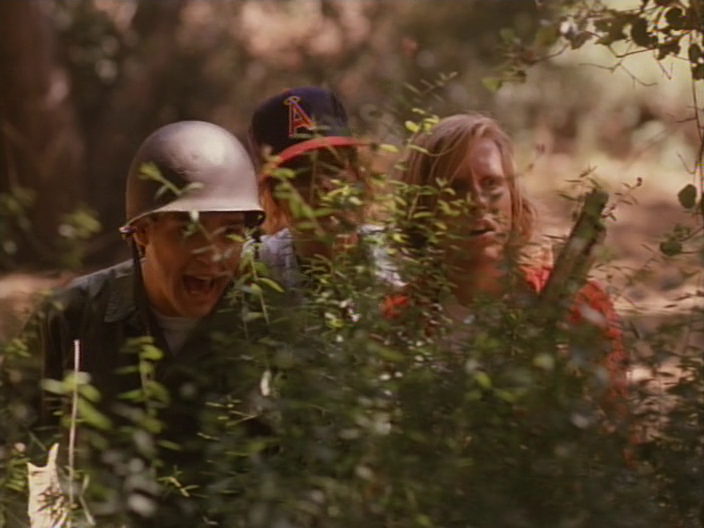
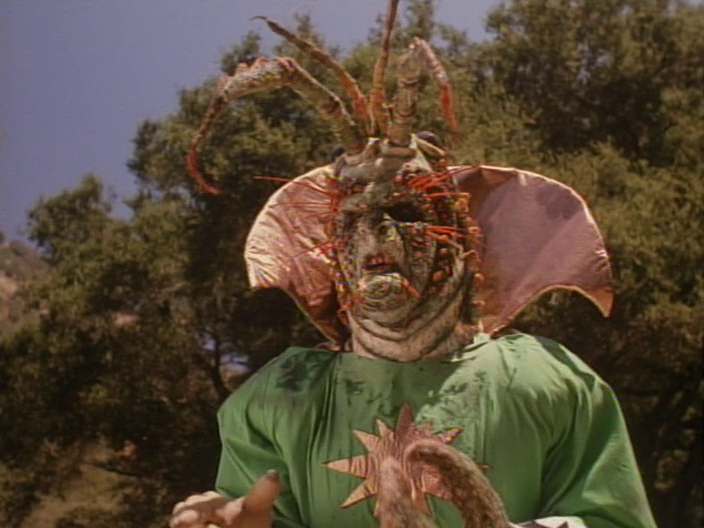
Lobster Man from Mars (1989)
Film review #532
Director: Stanley Sheff
SYNOPSIS: A movie studio executive is plagued by money problems, and requires a tax-write off to keep the IRS away. He decides to produce a film brought in by a young film writer that is utterly absurd: “Lobster Man from Mars…”
THOUGHTS/ANALYSIS: Lobster Man from Mars is a 1989 sci-fi film within a film. Opening up, we see Movie mogul J.P. Sheldrake, who is facing monetary pressure from the usual suspects: his ex-wife, the I.R.S., and so on. He decides he needs to release a movie that flops so badly he can make it a tax write-off and keep those he owes money to at bay. Fortunately, young movie writer/producer Stevie Horowitz walks in with the perfect potential film: Lobster Man from Mars, a film in the style of the old b-movie sci-fi films. The film (as a whole) becomes a film-within-a-film: The movie mogul sits in a theatre to watch the “Lobster Man from Mars” film, and we watch it as well, with a few occasional cutaways to Sheldrake to offer his thoughts. It’s an interesting setup, but was done prior in the 1968 film The Producers to much better effect. We’re also only taken out of the film a few times to see Sheldrake’s thoughts, meaning for the most part the “film in a film” element is irrelevant. With regards to the “Lobster Man from Mars” film itself, it follows a very typical b-movie sci-fi plot which it is aiming to parody: Mars is “leaking air” from it’s atmosphere, and so the ruler of Mars sends the dreaded lobster man and his assistant Mombo, who resembles a gorilla in a space helmet, to go to Earth and steal all it’s air…? Honestly, I’m not sure how they’re going to steal Earth’s air, and how it’s going to help if Mars is “leaking” any air it gets anyway, but regardless, when they arrive on Earth, the killing starts, and anyone who gets in their way gets turned into a pile of bones.
The film mostly plays it straight, with the film-in-a-film just being played without any commentary or over-the-top parody: it could easily pass for an actual b-movie. This is both a core strength and a weakness in the film: the best comedic moments come from the film playing it completely straight without any overt humourous moments, and it is the unexpected moments that provide the best comedy. The drawback to this is that it sometimes plays it too straight, and you forget you’re watching something that is supposed to be funny for fairly long stretches. The humour also feels fairly niche, in the sense that you would have to have actually watched these films originally to really get what it is parodying. Some of the really niche references, such as Colonel Ankrum being a reference to Morris Ankrum, who played similar characters in 1950′s films, is only going to be understood by a fraction of viewers. It definitely gets the b-movie feel right, but in 1989, there was plenty of other parodies of the genre that offered something new and entertaining from an entertainment perspective. This film just feels like it goes through the motions while reminding you it is a parody from time to time. There were a few of these b-movie parodies in the 80′s, but they typically went for a more upfront comedy and absurd premise, such as Killer Klowns from Outer Space. While a plot about Mars leaking air sounds quite silly, it definitely fits the b-movie mold, and would probably have fit right in. Although released in 1989, the film was actually written about ten years earlier, and it definitely feels that way. Lobster Man from Mars does something a little different, but it altogether feels a bit too niche and relies too much on in-jokes to appeal to a more general audience.
-
#531 – The Gingerweed Man (2021)
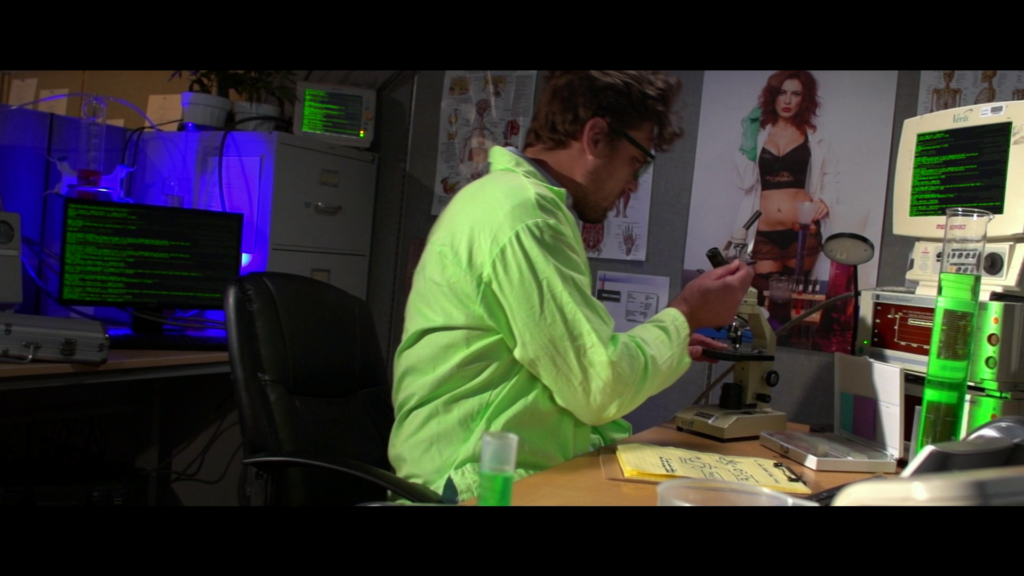
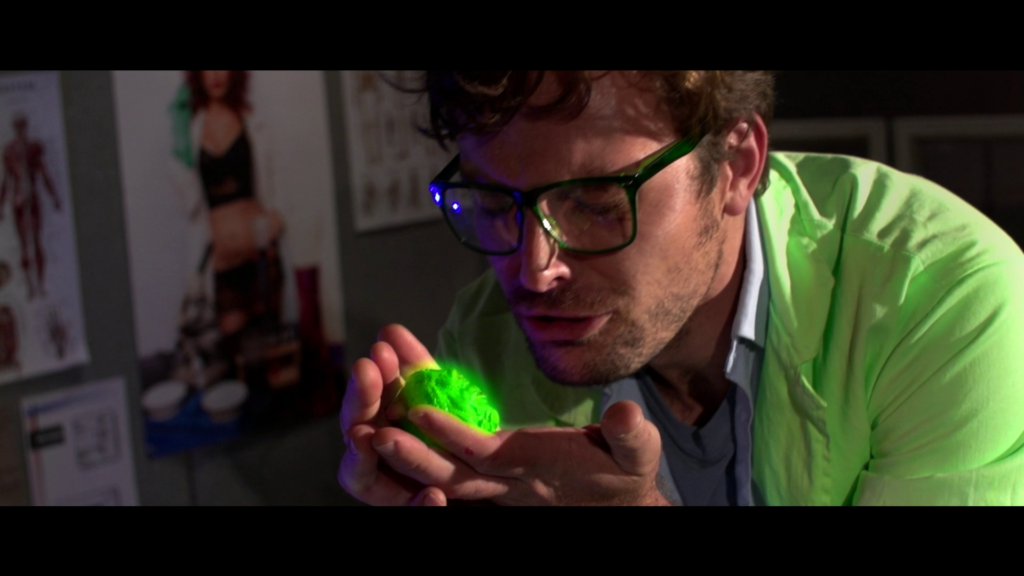

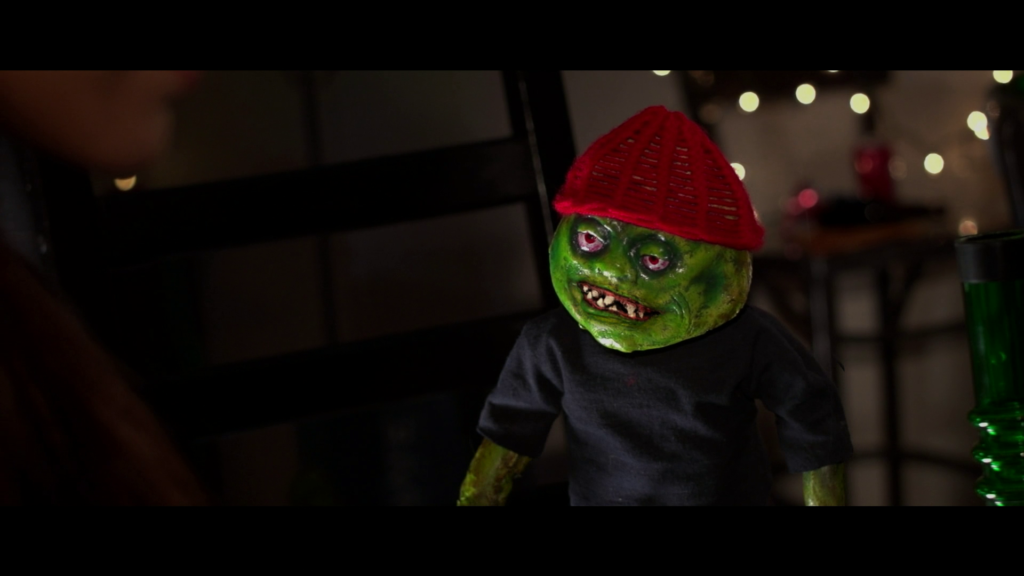
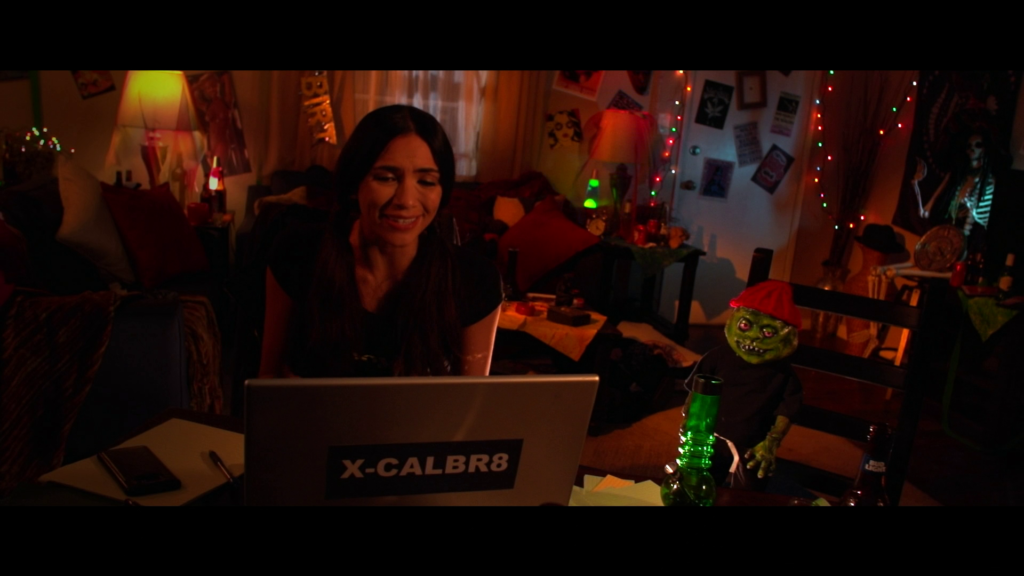
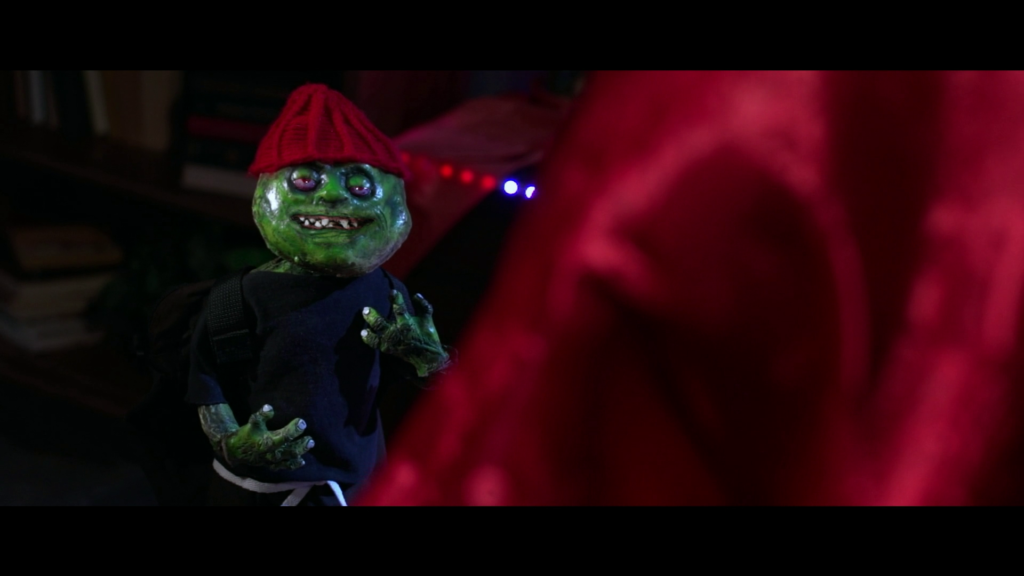
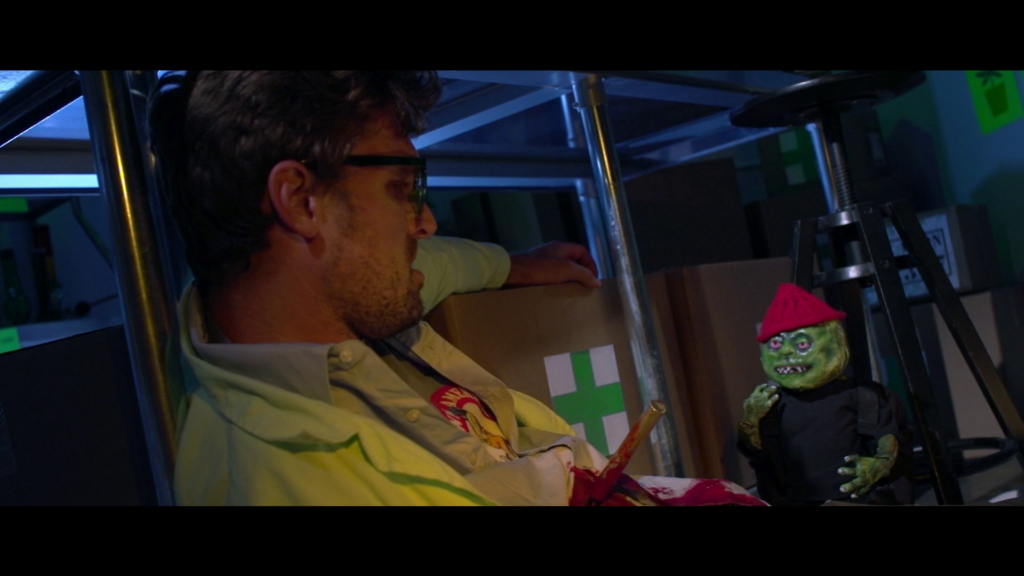
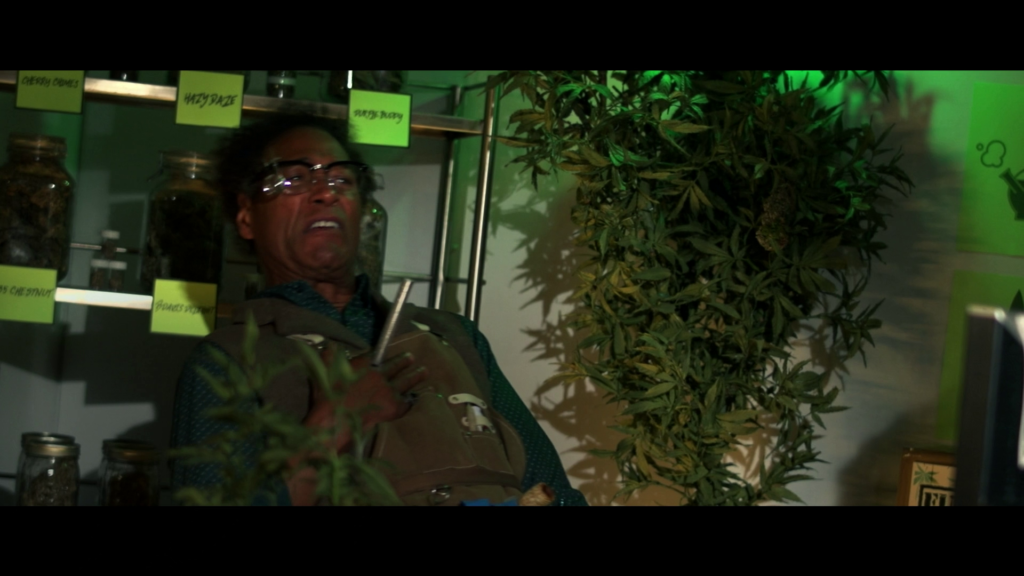
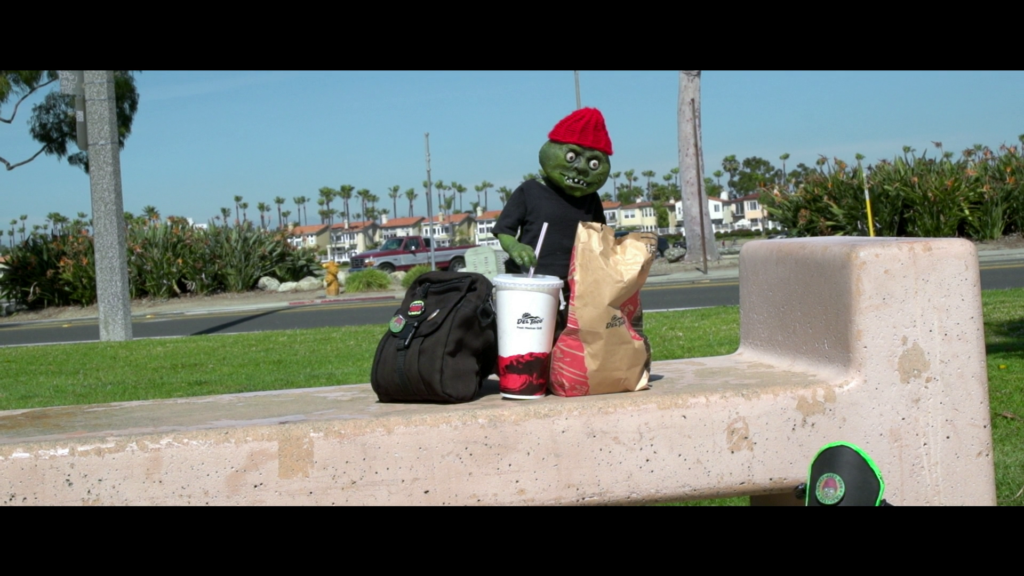
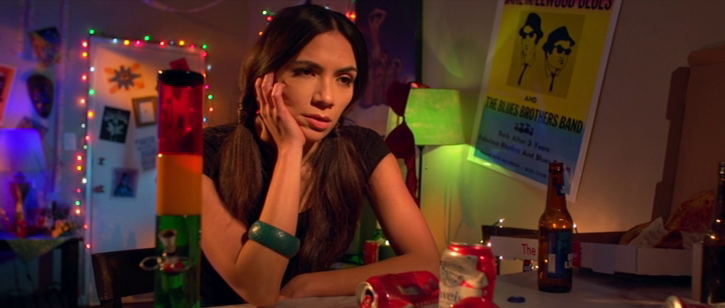
The Gingerweed Man (2021)
Film review #531
Director: Brooks Davis
SYNOPSIS: The Gingerweed man has started a weed delivery service in the city, catering to all sorts of clientele. When he stumbles upon a living, super strain of weed, he finds himself having to prevent it from falling into the wrong hands and being used for evil…
THOUGHTS/ANALYSIS: The Gingerweed Man is a 2021 film and a spin-off of the Evil Bong film franchise. From the opening, we see that the Gingerweed Man has set up a weed delivery service with his partner Barbara, and delivers weed to all the wacky people around town. Meanwhile, a scientist has managed to create a living, super strain of weed powerful enough to save or destroy the world. The evil “Smokeahontas” hunts down the scientist, who manages to hide the super weed and subsequently falls into the hands of the Gingerweed Man. The film’s story is fairly easy to follow, although offers nothing really of any substance. As with the Evil Bong films from which it spawned, the film is only going to be entertaining if you are as high as a kite; the humour is crude most of the time, and apart from that, just doesn’t give anything entertaining to the viewer. Luckily, at just over fifty minutes long (spread over two chapters), it’s fairly quick and harmless, and the short runtime means it doesn’t waste time with extended dialogue or pointless things.
One of the main problems with the film is that the main character, The Gingerweed Man, is not really interesting, and feels like a mish-mash of tropes: he dresses like a stoner, but talks like a posh Englishman with the accent to match. I’m just not sure how to situate the character, so it’s difficult to see where the comedy comes from. Smoke-ahontas as the villain doesn’t seem to really do anything other than to chase other characters, and “Buddy” as the super weed strain…thing is just an annoying high-pitched mascot thing which you will grow tired of quickly.
The Gingerweed Man could have been a chance to try something new after all the Evil Bong movies which are essentially all the same. Of course, being made by Full Moon Entertainment, it was never going to push things in an innovative or original way, but it is at least a bit different (in that it actually has some sort of plot). The film is shot decently, and there’s more than two different sets, so that’s a win. Overall though, I think it’s safe to say that The Gingerweed Man isn’t really anything worthwhile, unless you’re so high you’re detached from reality.
-
#527 – A Nymphoid Barbarian in Dinosaur Hell (1990)
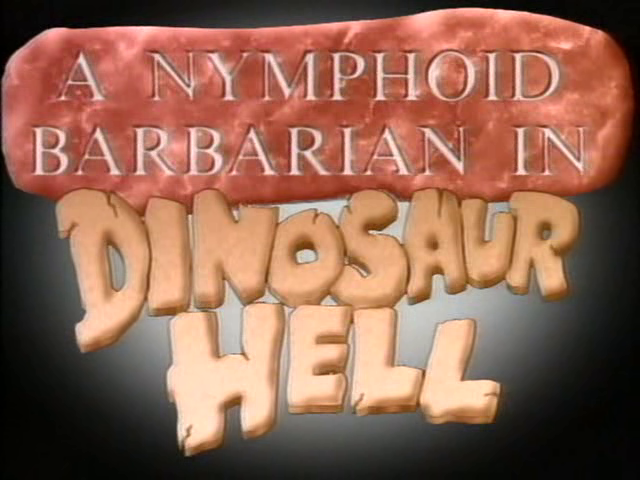
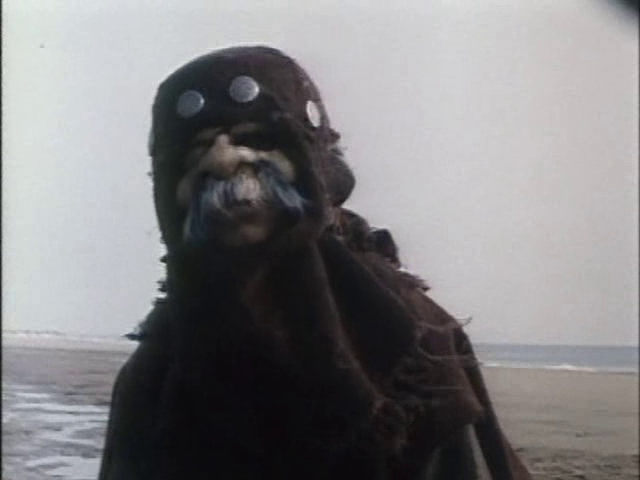
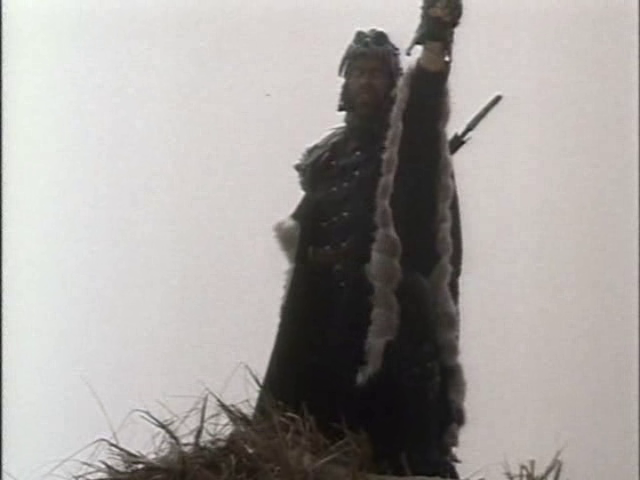
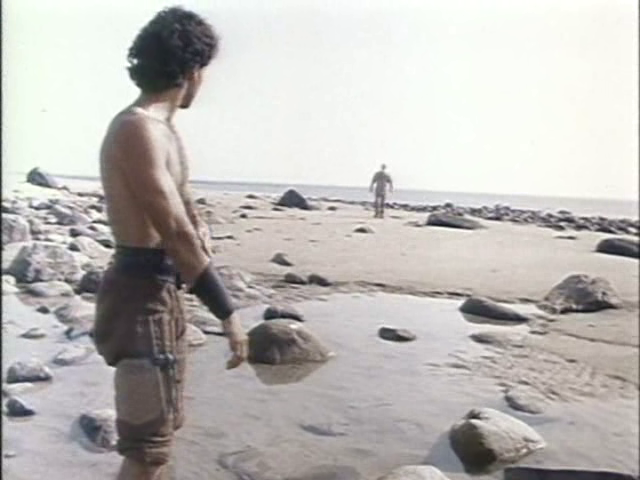

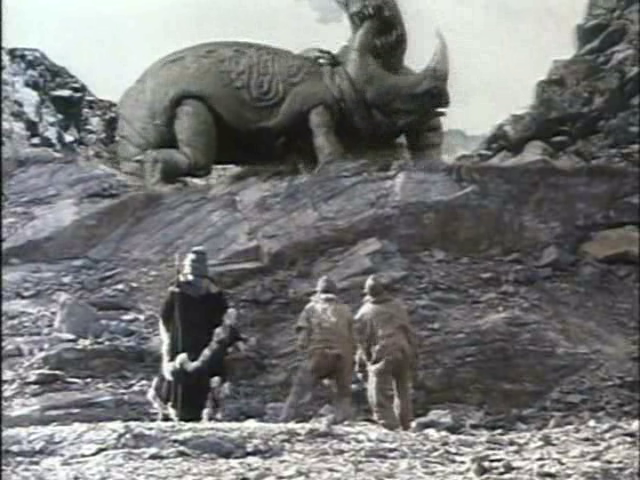
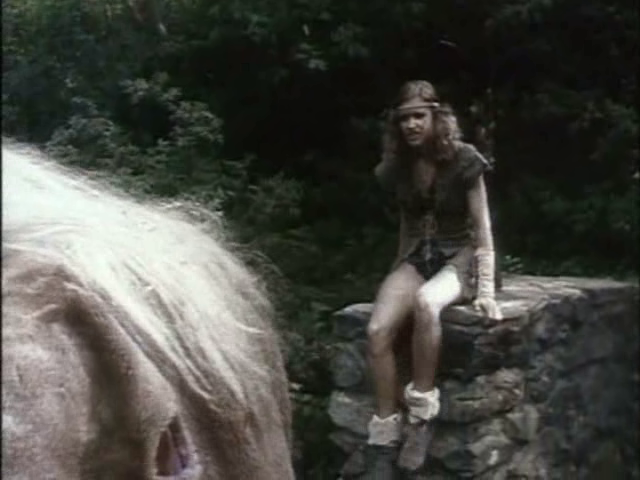
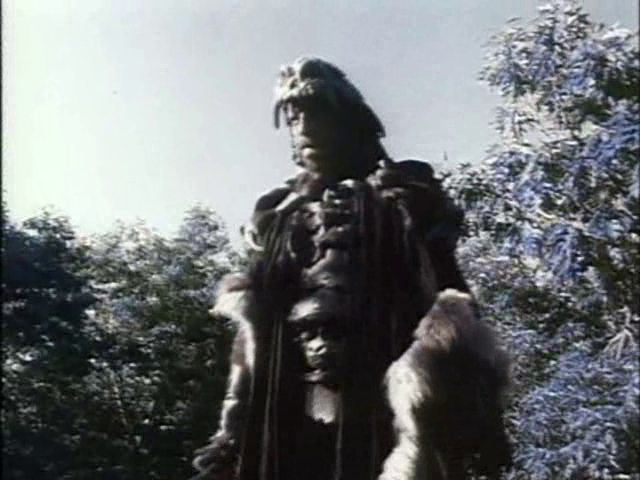
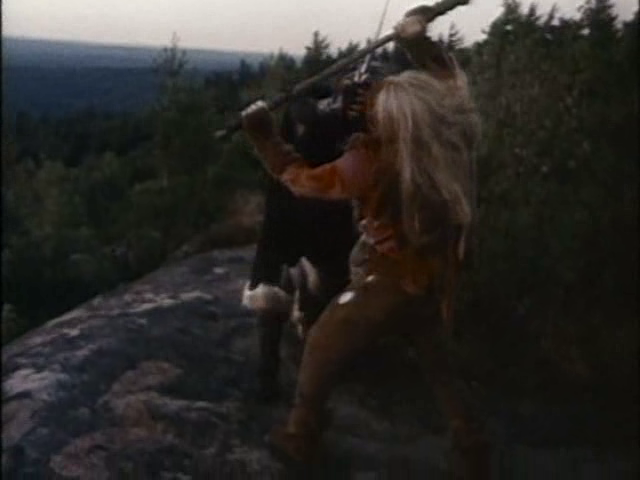
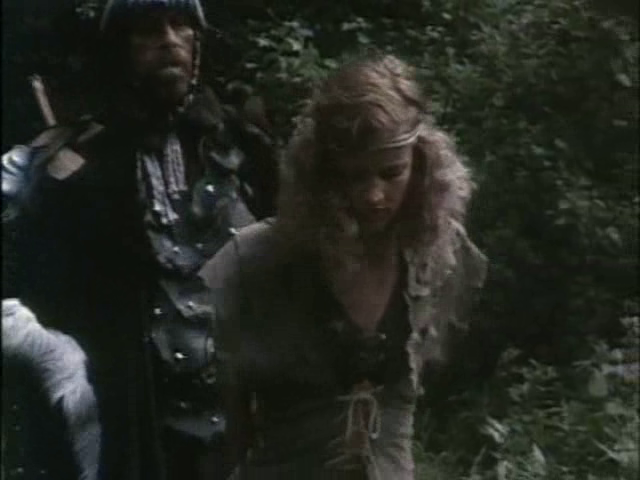
A Nymphoid Barbarian in Dinosaur Hell (1990)
Film review #527
Director: Brett Piper
SYNOPSIS: In a post-apocalyptic Earth, a young woman has to survive in a world infested with dinosaurs, mutants, and barbarians.
THOUGHTS/ANALYSIS: A Nymphoid Barbarian in Dinosaur Hell is a 1990 post-apocalyptic sci-fi film. The film opens up the same way as nearly every post-apocalyptic film does: with a montage of the world being essentially destroyed by nuclear war. What is left is a world filled with dinosaurs, mutants, lizard people…just a mish-mash of any and all typical things you’d find in other films. There’s not much rhyme or reason to the setting. The plot is…basically non-existent: there’s hardly any dialogue, any motivation, or any direction. With post-apocalyptic films you can definitely make the lack of dialogue or story work: in a world where society has collapsed, sometimes the only goal is to survive, and films like Mad Max 2, which also uses minimal dialogue and focuses on action, works extremely well. Here, that is not the case, as the action is sub-par and without any spectacle. The film just consists of some wandering about and scrappy fights, with a few stop-motion monsters as well. There’s no sense of character, world or development to maintain interest, and it certainly doesn’t live up to the hyped up title, which is probably the only reason anyone would be drawn to this film.
But we shouldn’t perhaps be so disparaging about the film because it was made by the company Troma; who are known for making low-budget sci-fi horror films that rely on comedy and satire to make fun of the genre. Even by Troma’s standards though, this is bad. This film just doesn’t have any amount of self-awareness or satire that would make you think it is poking fun at the genre: it’s just dull, and the lack of any substance means you really have no idea what to take from it. The title promises much, but delivers very little: there’s not really any dinosaurs, the barbarian isn’t a nymphoid (in fact nymphoid isn’t a word), and you’re not missing out on anything if you skip this film.
-
#526 – Sonic the Hedgehog (2022)


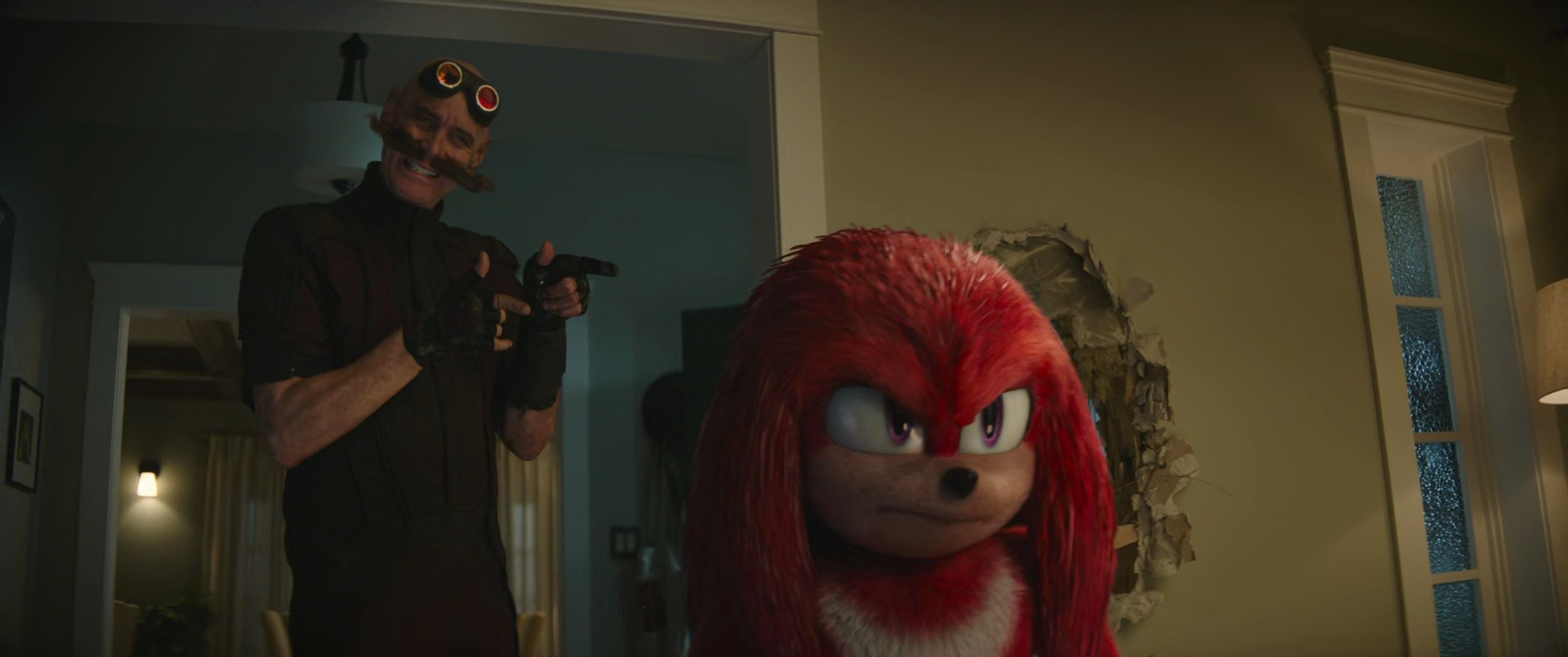
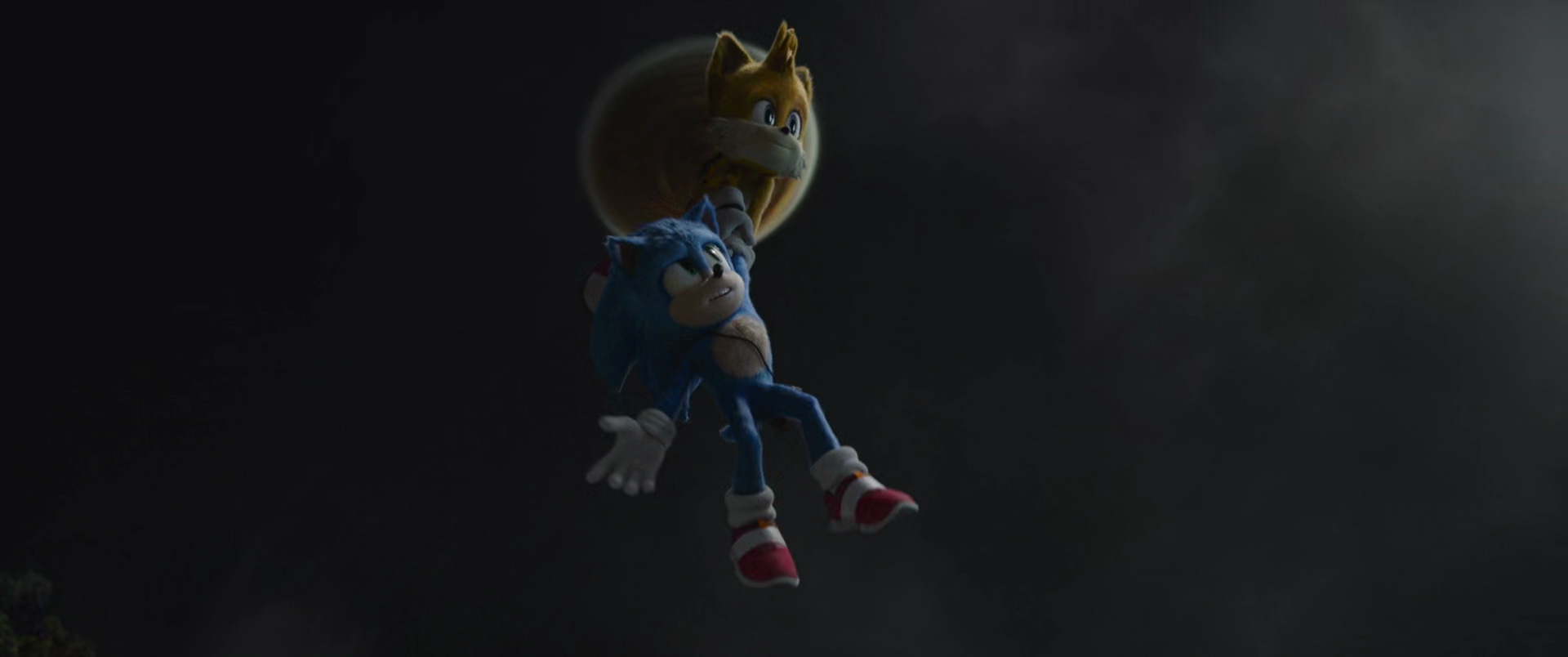
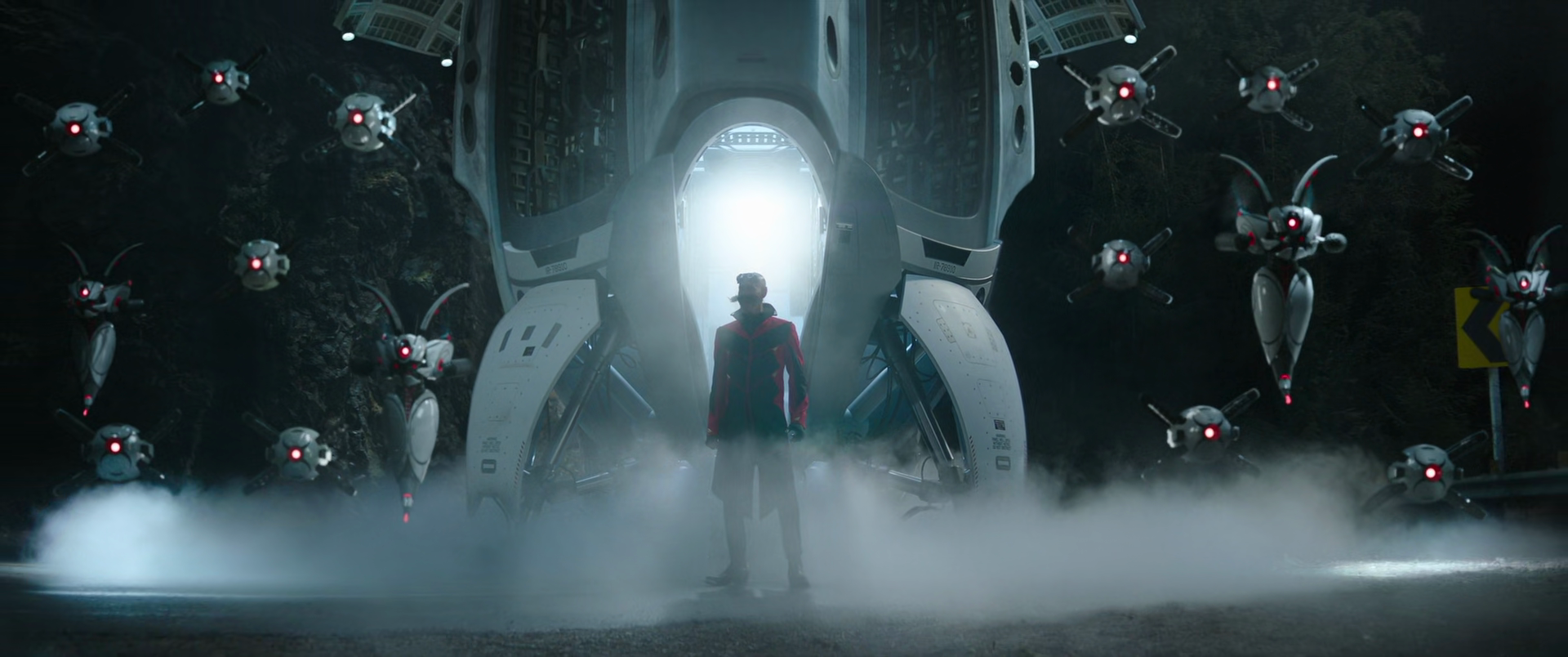
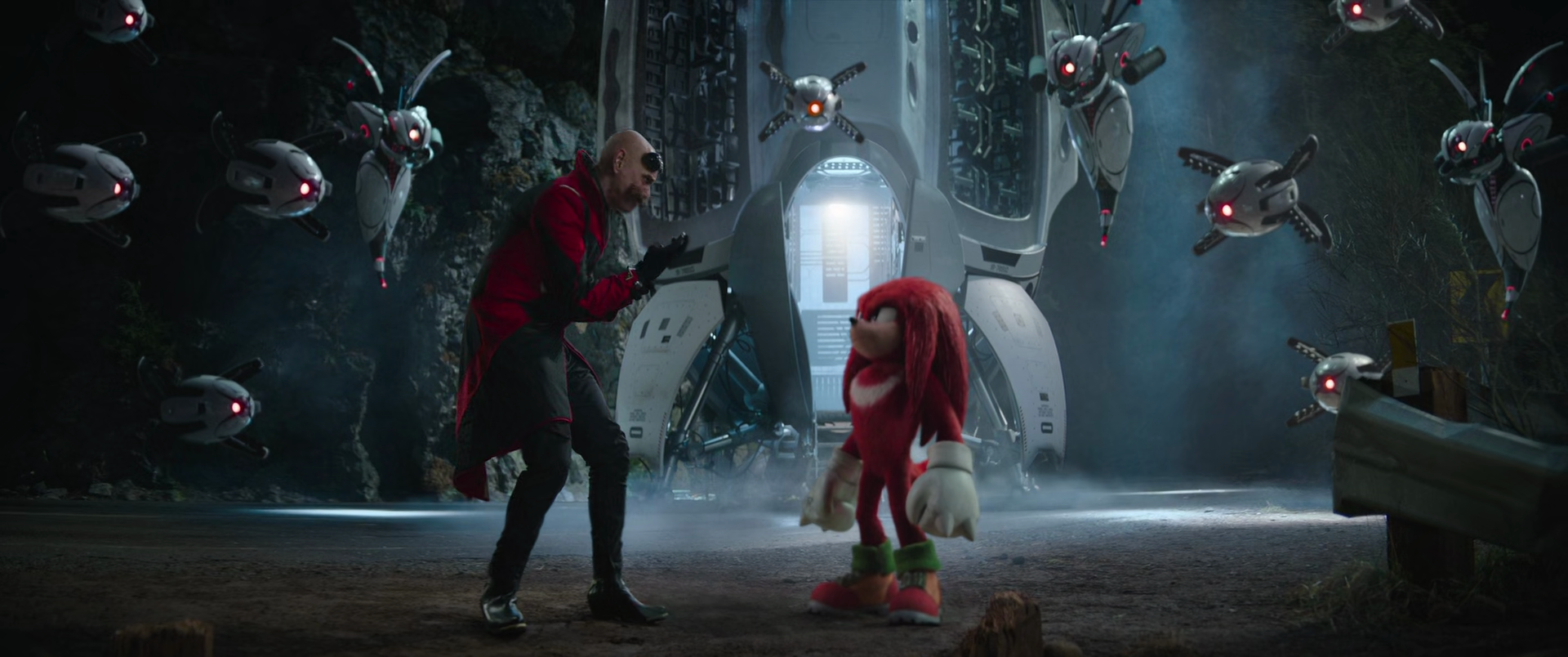
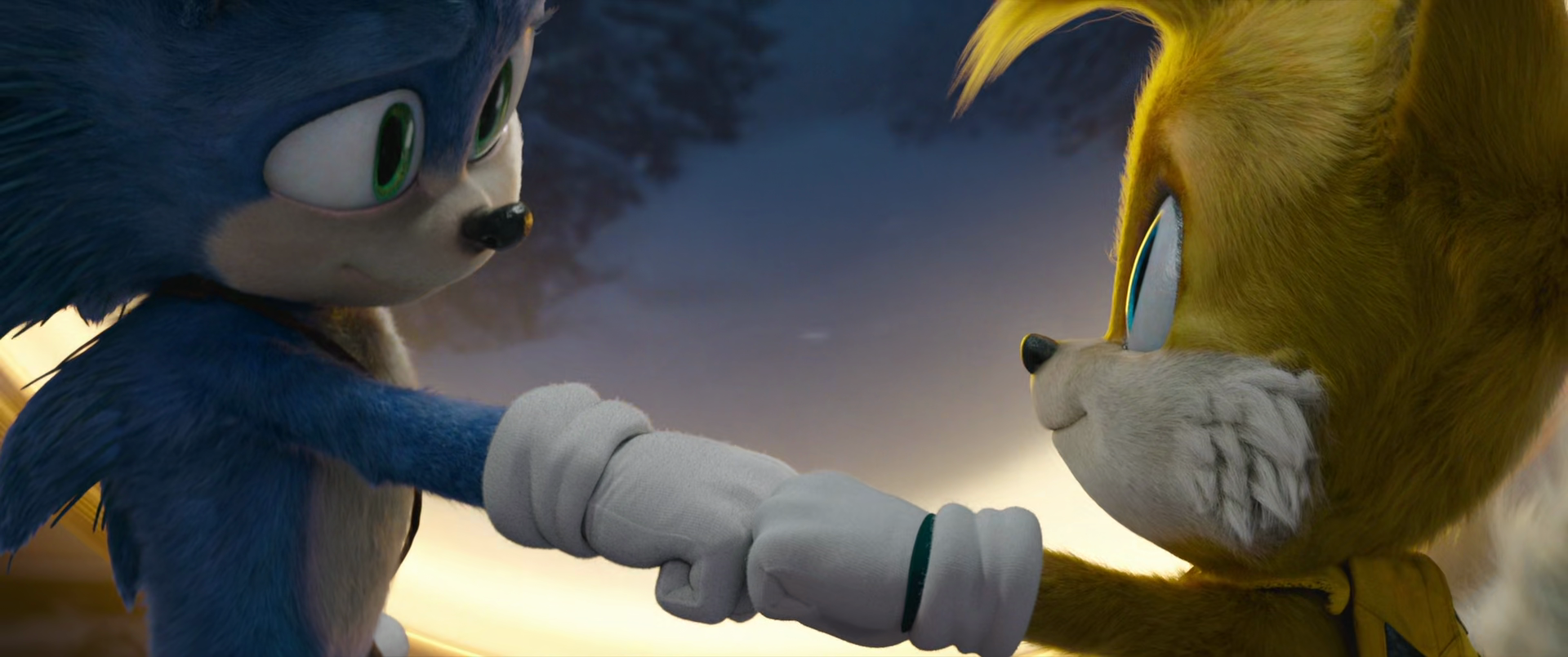
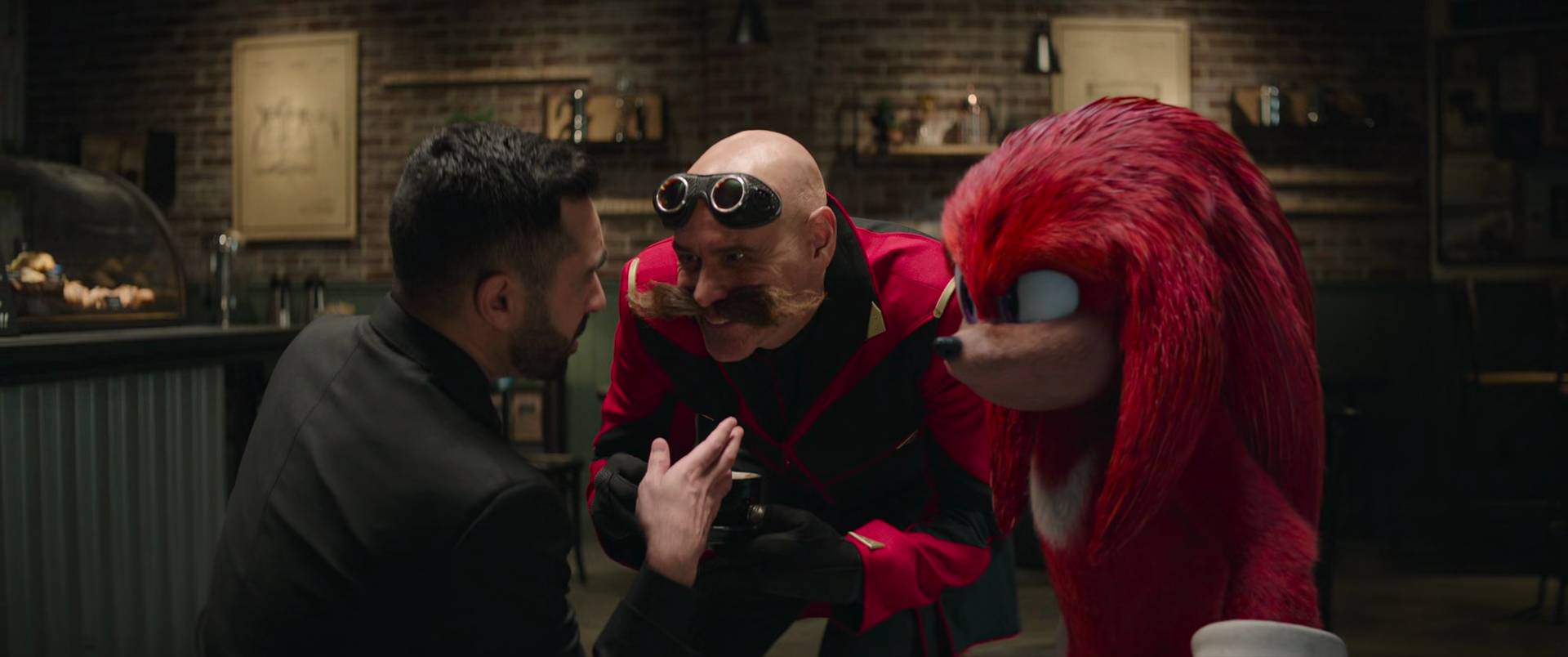
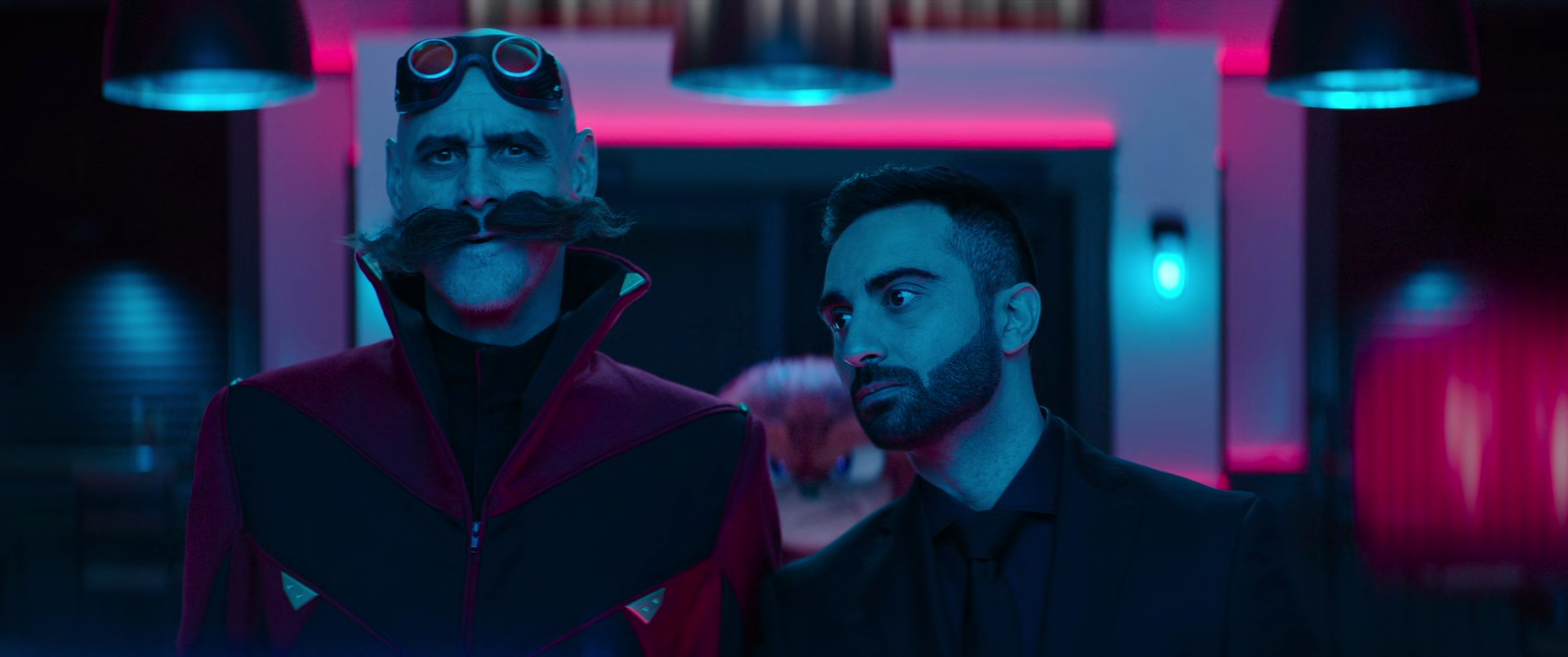

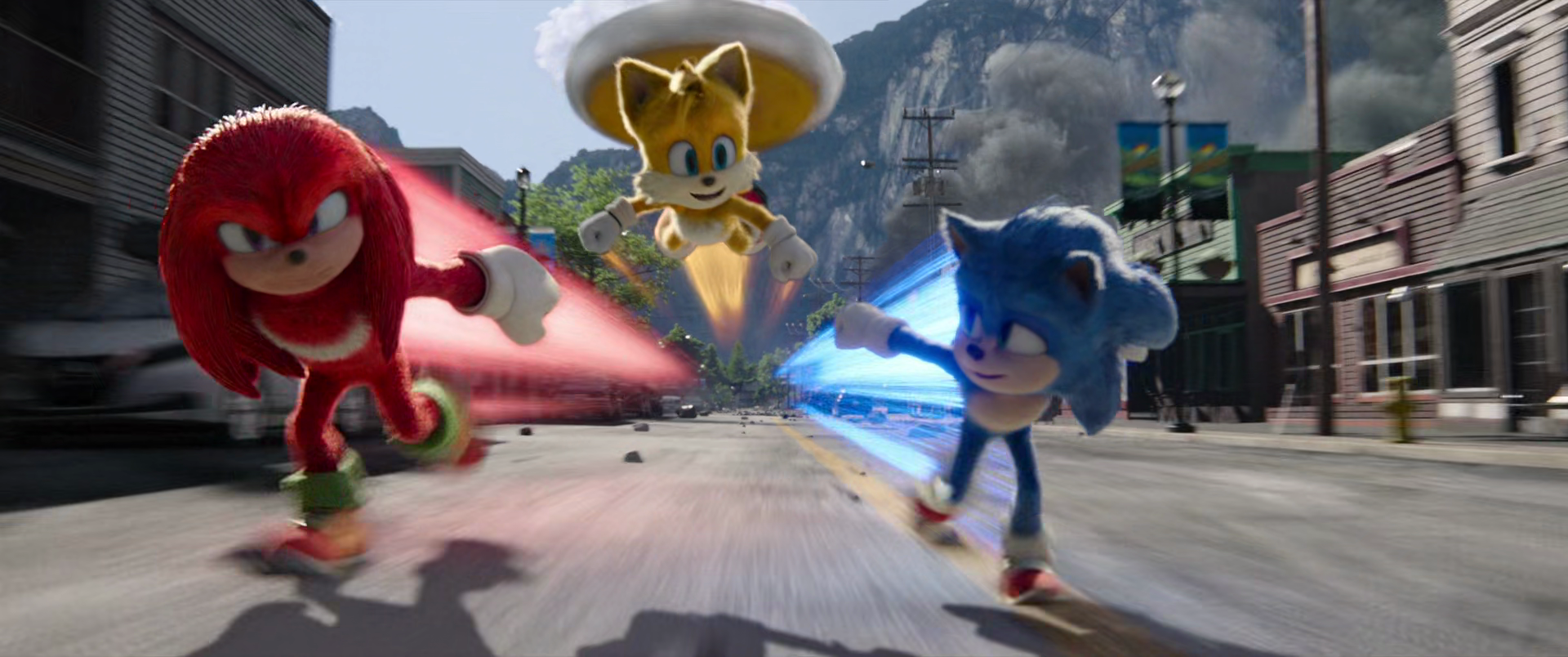
Sonic the Hedgehog 2 (2022)
Film review #526
Director: Jeff Fowler
SYNOPSIS: While Sonic the hedgehog struggles to be a hero on Earth, his nemesis Dr. Robotnik is making plans to return to Earth, helped by the mighty Knuckles the Echidna. Meanwhile, Sonic manages to get some help from Tails, a new friend who comes to warn Sonic of Robotnik’s return, and his quest to find the master emerald…
THOUGHTS/ANALYSIS: Sonic the Hedgehog 2 is a 2022 film, and the sequel to the 2020 film Sonic the Hedgehog. The film starts off with Sonic trying to use his powers for the best, and struggling to fit into the role of a hero. Meanwhile, Dr. Robotnik is trapped on a planet of mushrooms, looking for a way to get back to Earth and get his revenge. The story feels like one you would typically see in a sequel, with the characters being given new problems to overcome, and some attempt to develop their characters. It feels very similar to the first film, but that’s not necessarily a bad thing, as the first one was decent: nothing spectacular, but decent for its young target audience. However, I think the script could have done with another re-write or revision: the whole thing doesn’t really stick together very well, and the scenes feel disjointed, alongside the main plotline of the film getting lost through the mish-mash of scenes. The film does at least focuses on Sonic and his friends for most of it, and the story elements of the human characters is diminished, but this is what you want really. This also has the effect of having their story more self-contained and easier to follow than what Sonic and his friends are doing. At a runtime of two hours, the film could probably have been cut down easily by about fifteen to twenty minutes, and that is probably something that would have been achieved with another script re-write.
All of the characters from the original return, and have their own things to do. The introduction of Knuckles is a stand-out point, with Idris Elba voice the character and really making it his own. Probably the funniest moments in the film come from Knuckles and his over-serious nature. Jim Carrey brings the energy as Dr. Robotnik again, and Agent Stone is a good lackey for him. The introduction of Tails is a bit wobbly, and always feels like any explanation or development of his character is off-hand and implied. I think there should definitely have been more of a balance between the introduction of both Tails and Knuckles to properly flesh out both characters.
Overall, Sonic the Hedgehog 2 is a sequel that continues the work of its sequel without too much fanfare: it carries on the bits which worked and improves on them to some degree, while focusing less on the human characters (but even their scenes feel a bit more focused, even if they’re mostly just for the sake of comedy). It’s still aimed at a younger target audience, but it can still get a few laughs, especially when it relies on good old-fashioned comedy rather than making awkward references (although I’m sure the target audience will enjoy them still). There’s definitely some issues with the story not flowing and coming together, the long runtime, and the story of some characters not being integrated fully into the story, and as mentioned, I think most of these issues could have been addressed with another script re-write or revision. Nevertheless, its still an entertaining film for its target audience, and fits nicely alongside the first film.
-
#525 – The Flight that Disappeared (1961)
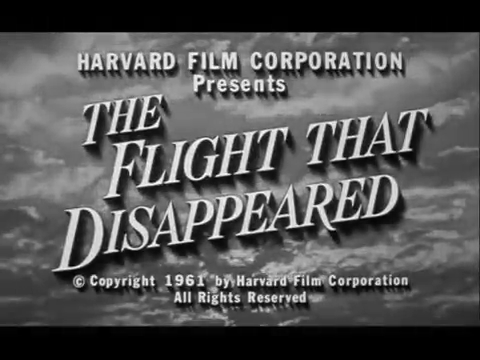
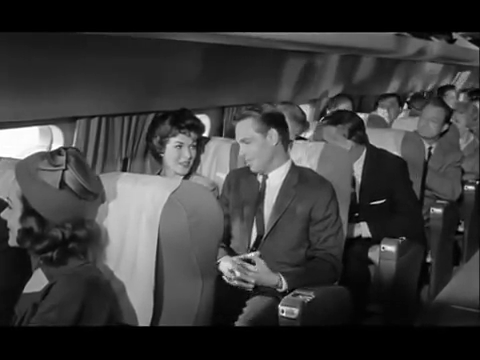
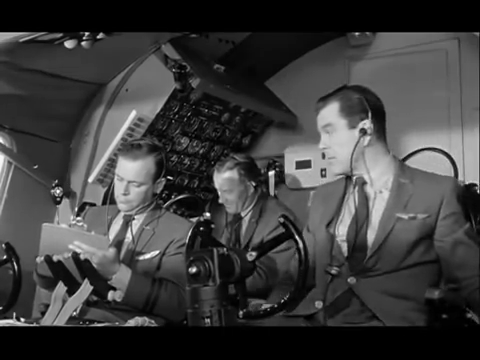
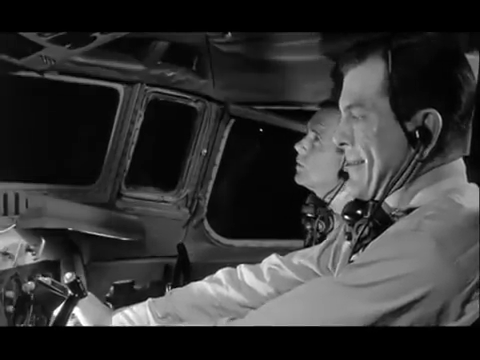
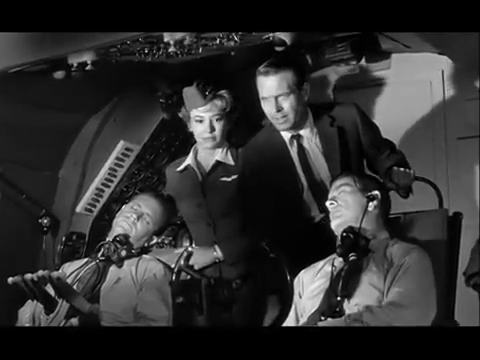
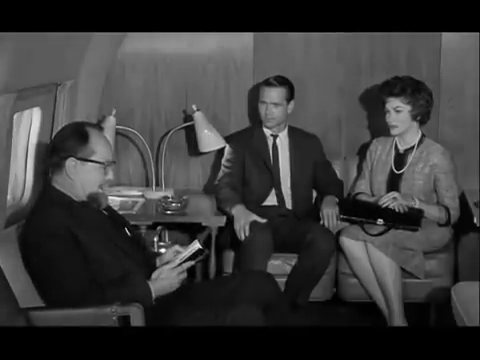
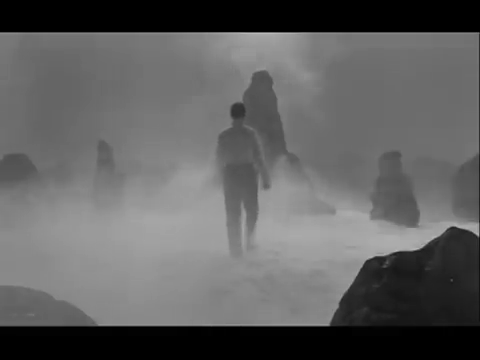
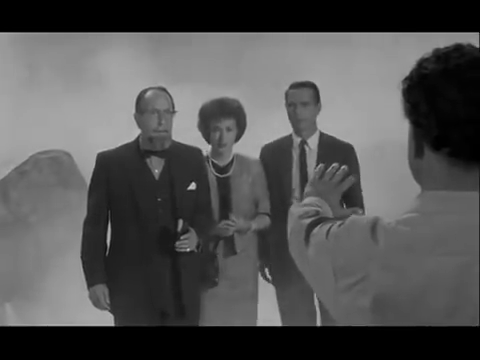
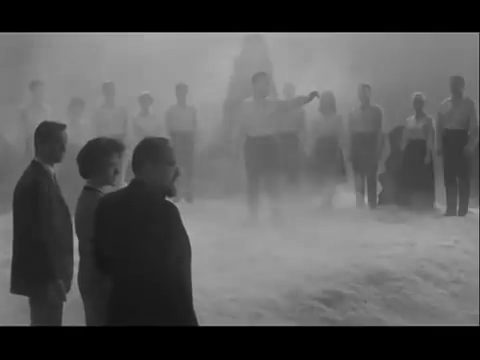
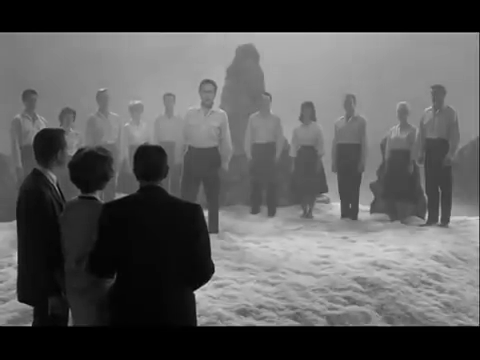
The Flight that Disappeared (1961)
Film review #525
Director: Reginald LeBorg
SYNOPSIS: A commercial flight to Washington D.C. starts to gain altitude uncontrollably, eventually losing contact with the ground. Among the passengers are three top scientists, who have been summoned to the Pentagon for a meeting, and eventually the only ones who are left conscious as the aircraft continues to ascend…
THOUGHTS/ANALYSIS: The Flight that Disappeared is a 1961 film. The plot concerns a commercial flight to Washington D.C. that continues to gain altitude as the pilots lose control and radio contact with the surface ceases. The build-up of the mystery is fairly interesting, and it certainly makes you wonder where it is all going: there’s no evidence of any sci-fi or extraordinary influences, so it does keep you guessing as to what is actually happening. The cast is introduced with enough detail to set the scene well, although what turn out to be the three main characters, the scientists, Dr. Carl Morris, Tom Endicott, and Marcia Paxton, aren’t very apparent until a good portion of the film, which again helps with the mystery, but also leaves the film a bit directionless. The three main characters are unknown to each other when they board, but learn that they are all there for the same reason: to attend a secret meeting at the Pentagon for the development of a new “beta bomb,” a weapon more powerful than the atom bomb. There’s a passenger on the plane who tries to talk to them individually, saying that they must use their weapon on enemy countries with a pre-emptive strike, but the scientists are insistent that it is a weapon to only be used in self-defense or retaliation. The plot, as you can probably tell, is rooted firmly in cold war era politics, although it doesn’t contribute to the mystery too much. While the film does a lot to set up the scene and the people aboard the flight, it is let down by the fact that there’s barely any personality between them, and nothing really happens in the first part of the film.
It turns out the three scientists have been summoned to a trial of sorts by the people of the future who have yet to be born, and probably will never be, if their weapon is allowed to be built and used. The film quickly jumps here from nothing happening, to a bit too much happening: we’re not given any set up for this whole trial and having to face people from the future, and it is all a bit sudden. I feel like the message gets increasingly muddled as well in this part, as the future not born people (whatever we are calling them…) accuse the scientists of being guilty because they conceived the idea of these weapons, and despite opposing their use in anything other than self defense. Is the film’s message essentially seems to be that having a bad idea makes you guilty, whereas the person or politician that uses it is simply a bureaucrat following orders and ticking boxes. There’s something about the whole message here that seems a bit off. I appreciate that the film does look at the moral quandaries it raises with a good amount of depth, but the overall conclusion just seems a bit weird; holding oneself morally accountable to people that have not or may never be born just seems a bit misguided to me.
Despite the film being an independent production, it is made quite well: the airplane where most of the film is set is a set, but it is pretty convincing and accurate. Overall, The Flight that Disappeared has an interesting mystery, but is bogged down by dull characters, and slow pacing at the beginning. The resolution and messaging is also muddled, but it does at least explore it’s subject in some depth. It probably would have been at home as an episode of The Twilight Zone, and certainly fits that tradition of 60′s science-fiction.
-
#523 – The Tunnel (1935)
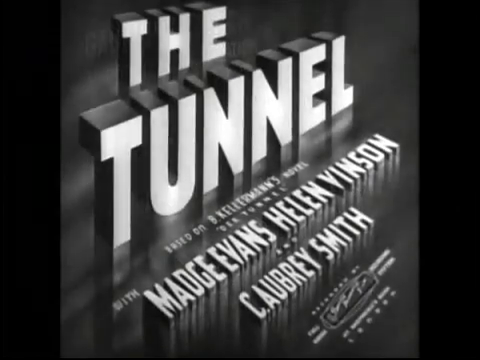
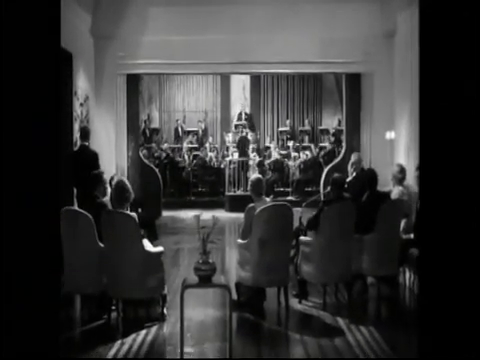
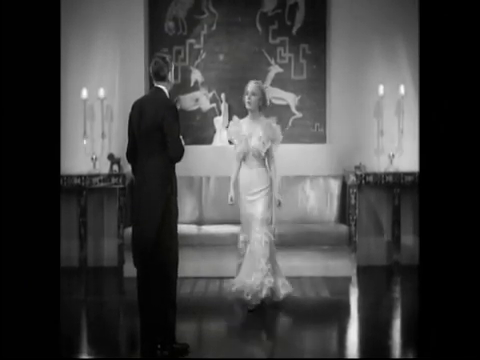
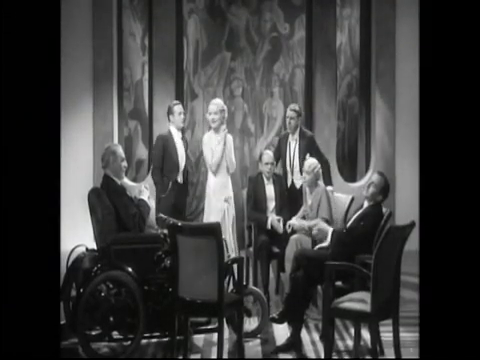
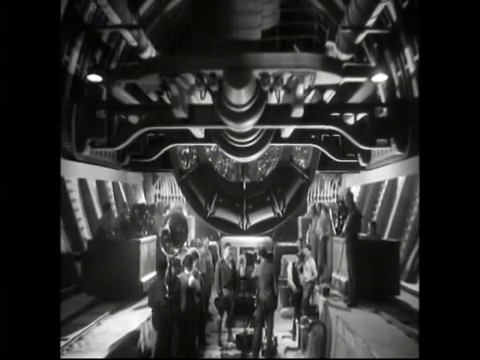
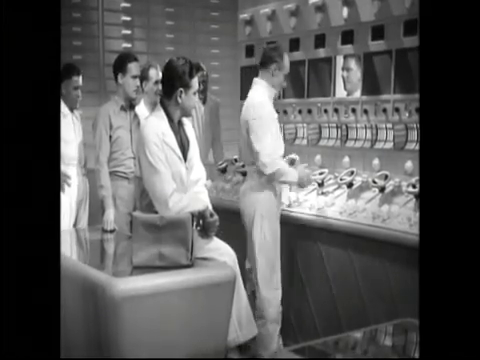
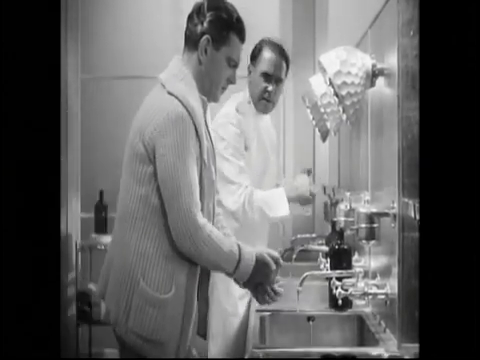
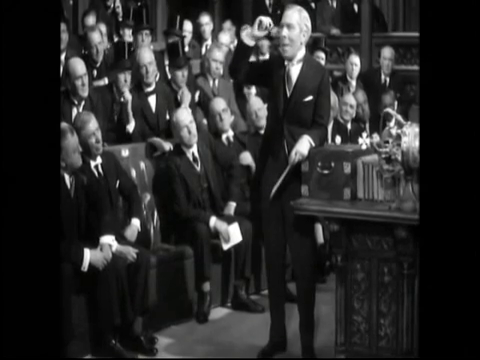
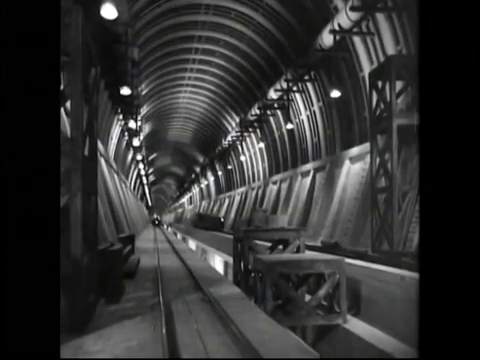
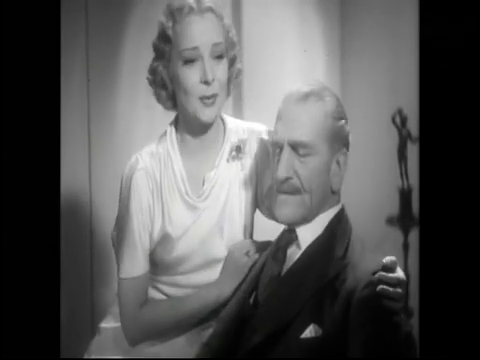
The Tunnel (1935)
Film review #523
Director: Maurice Elvey
SYNOPSIS: Richard McAllan is an engineer who has a dream to build a tunnel between England and the United States. He convinces a group of billionaires including Lloyd, the world’s richest man, to fund the project, but there are many other problems that present themselves on the way to the projects completion, both in terms of McAllan’s private life, and those looking to profit from the tunnel’s failure…
THOUGHTS/ANALYSIS: The Tunnel (released as Transatlantic Tunnel in the U.S.) is a 1935 science-fiction film based on the novel Der Tunnel by Bernhard Kellermann. The film opens up with an orchestra performing for a select group of billionaires at the home of Lloyd, the richest man in the world. Engineer Richard McAllan is also there, to propose the construction of a tunnel underneath the Atlantic Ocean, connecting England and the United States. After much persuading, he manages to get their support, and work on the most ambitious project in human history begins. The plot of the film goes through all the drama and problems that would be associated with such a project, and splits its time between looking at the tunnel itself and the logistical problems, and also how the project impacts McAllan and his relationships with those around him. The balance between the two is well executed, and everything flows and connects nicely. There are a few changes from the novel and the 1915 film version, but they are mostly minor. The setting seems to be a near-future setting, where the Channel Tunnel was completed in 1940, so it’s a different vision of the future rather than what was actually happening in 1940 in Europe.
The tone of the film is very uplifting and optimistic, and McAllan is presented as an idealist who wants to use this project to change the world for the better. We also see political leaders in the U.S. and U.K. similarly making speeches in the U.K. parliament and U.S. congress to this effect. The film stands out in two respects: First, the acting is pretty good for the era, and the emotional scenes are delivered very well. The dated romance stuff and traditional roles still feel dated, but when the film needs to convey more raw emotion, it does so very convincingly; more so than any other film I’ve seen of the era. The cast isn’t too varied, but everyone has a specific role to play, and you get a good sense of what they’re there for.
The second stand out part of this film is the sets and design: you really get a sense of the tunnel’s massive scale in these large sets full of machinery, filled with crowds of men digging. The Tunnel is actually the third incarnation of the film released over two years, with the German and French versions released first, and the English version released after. Each version uses the same sets and mostly the same script, but changes the actors for the different languages (this was before dubbing was a thing). As such, the sets were probably meant to last. The English version also has a different director, which means it deviates a little more from the other two. Perhaps the big difference between the film and the novel is that the film presents a more evenly optimistic tone; and that the end justifies the struggle of the development of the tunnel. The novel focuses much more on the hardships though, and McAllan (Mac Allan in the original German) becomes a worldwide reviled figure. The ending is also a high note, marking the completion of the tunnel and new prosperity for “the English speaking world,” but we never see how this takes shape, but since the film is about the construction and completion of the tunnel, and dealing with it’s consequences would probably dilute that focus. The novel does look a little closer at the effects of the tunnel’s completion, but it’s not entirely optimistic: the tunnel is already shown to be updated (the completion of the tunnel takes a lot of years to finally complete, and by then, it had already become obsolete, as airplanes were now able to carry people across the Atlantic faster than travelling through the tunnel. With regards to this film version of The Tunnel, it has some very strong points in both the acting and the design, and really brings the story to life in this regard. Some parts are a bit predictable and rooted in the old-fashioned values of the day, but there’s enough to make it an interesting watch if you like the films of this era.
-
#522 – The Tunnel (1915)
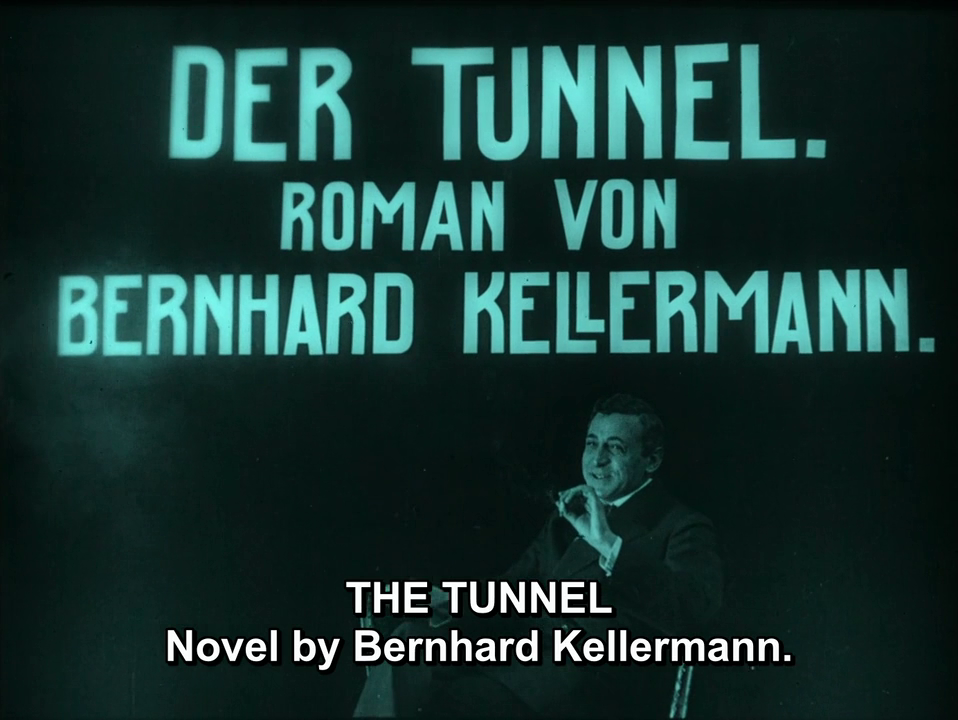
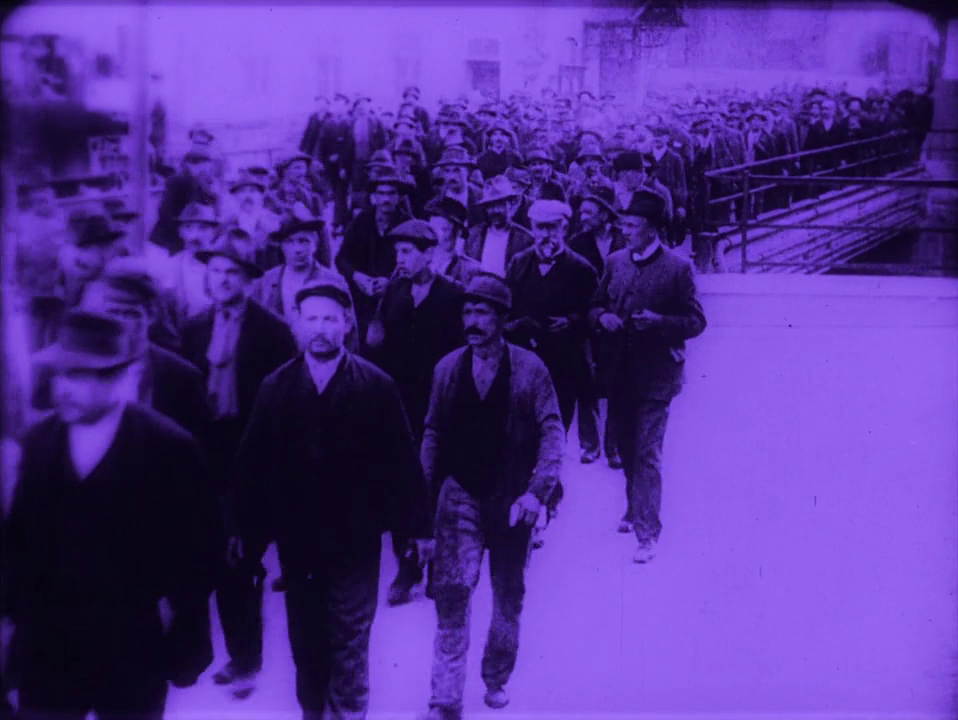
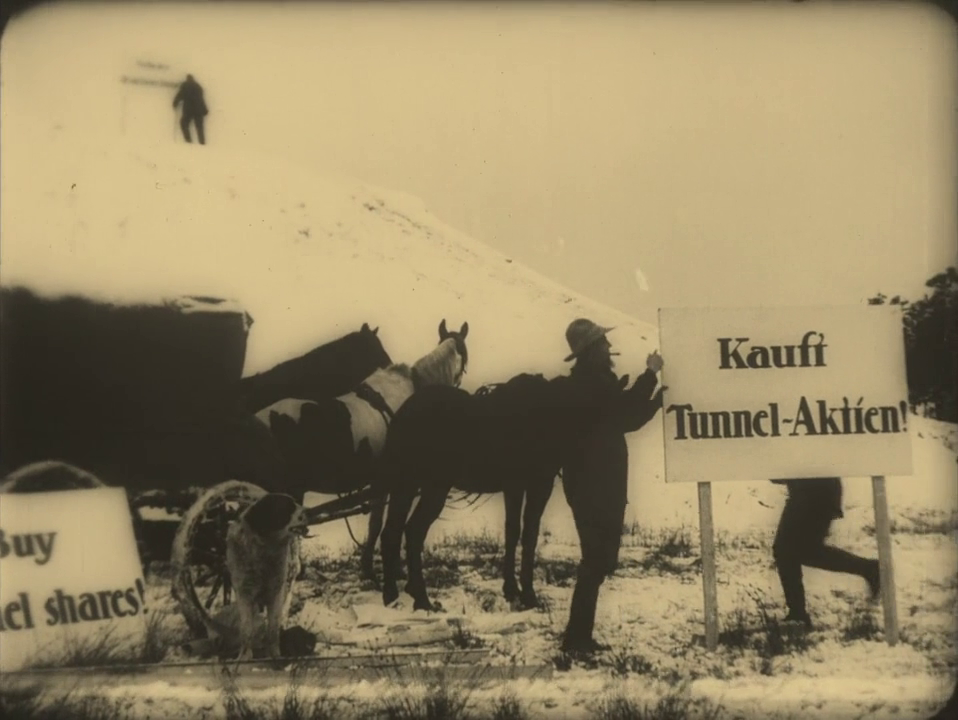
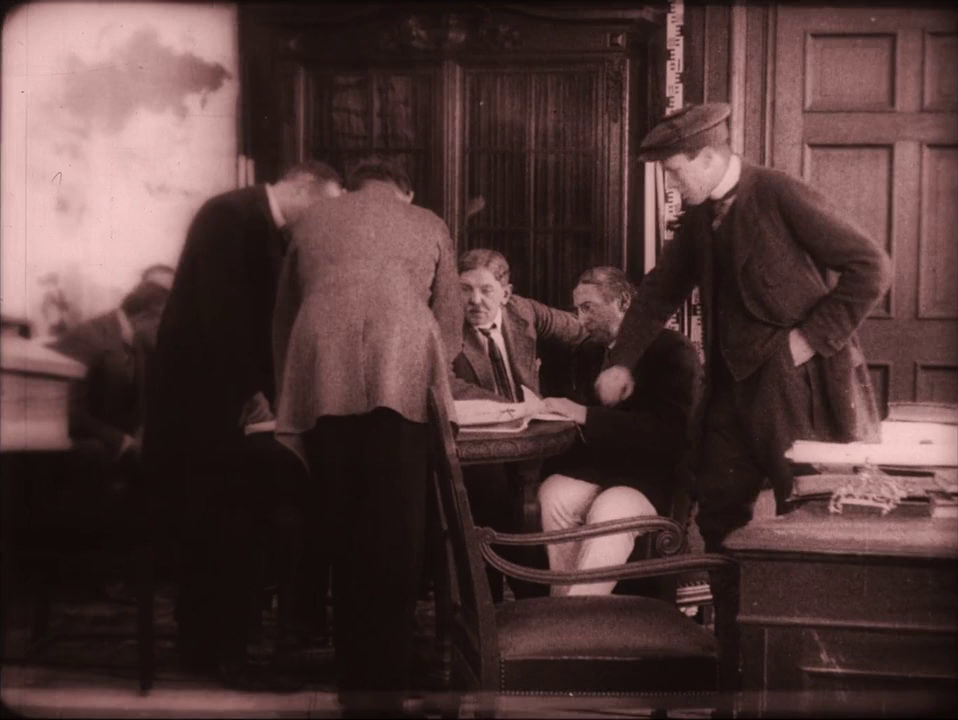
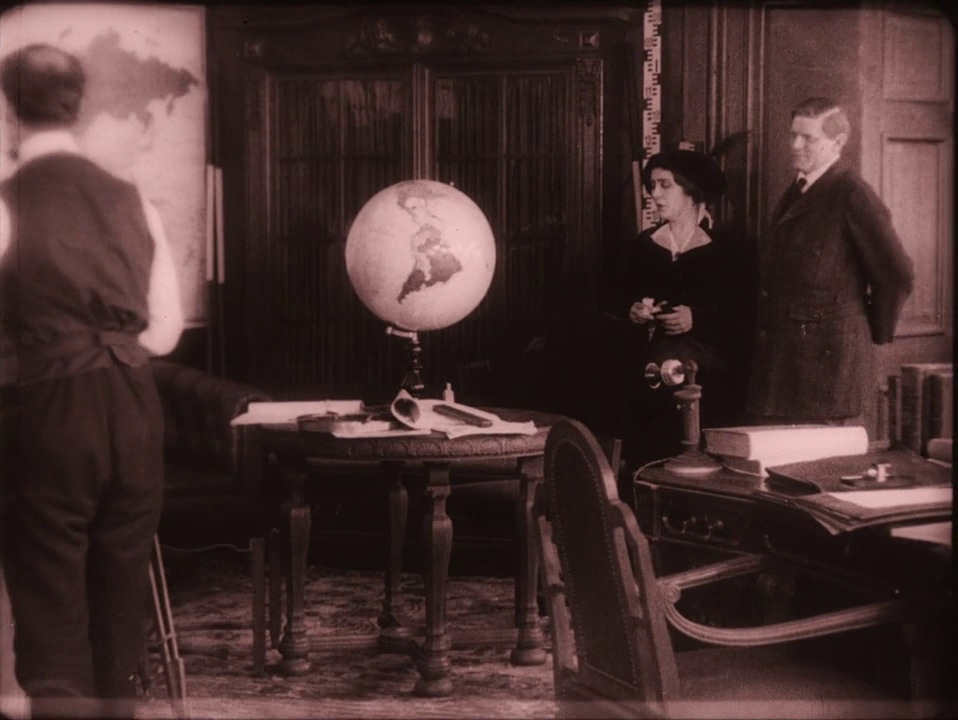
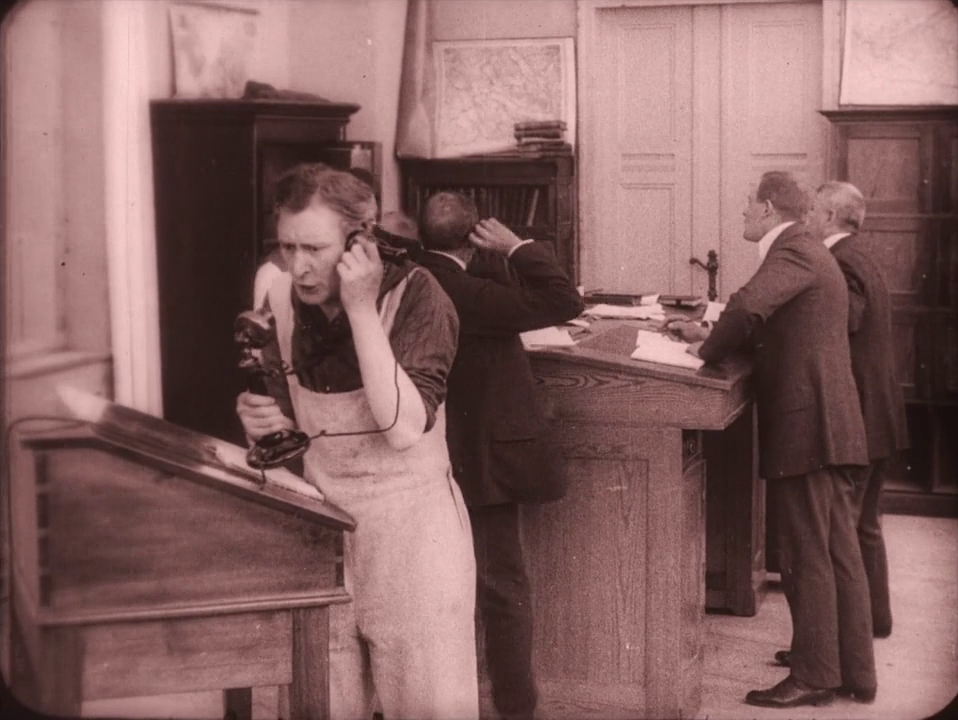
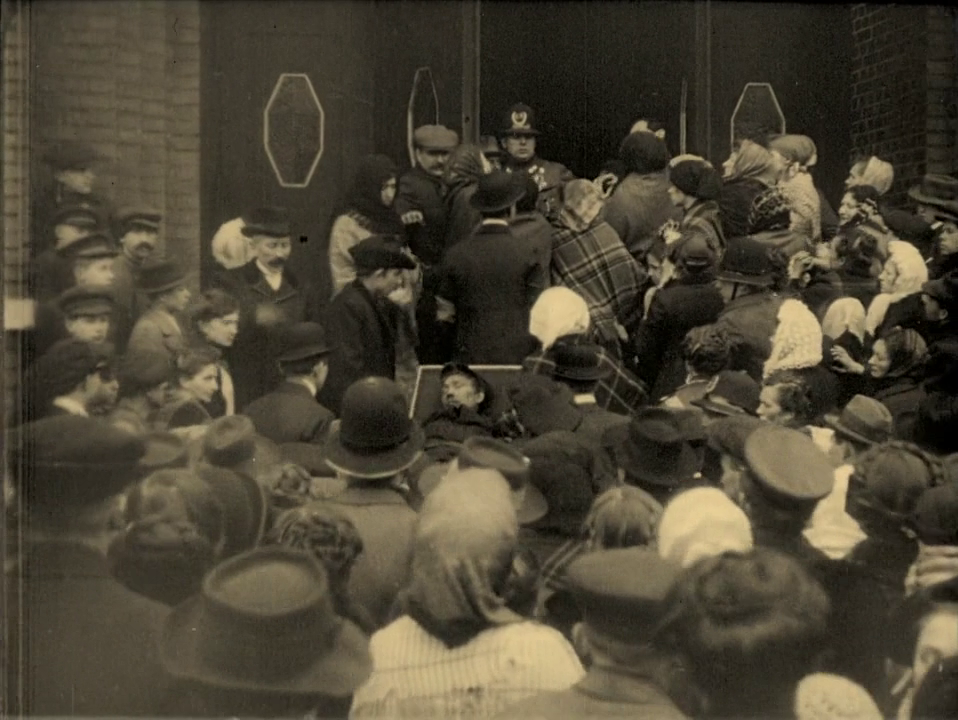
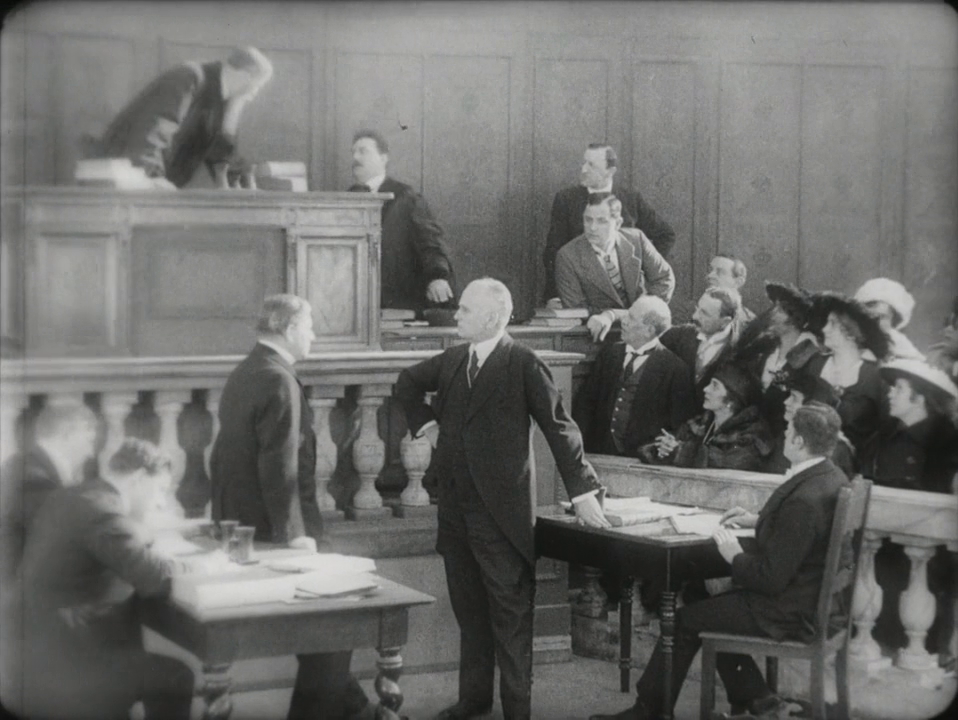
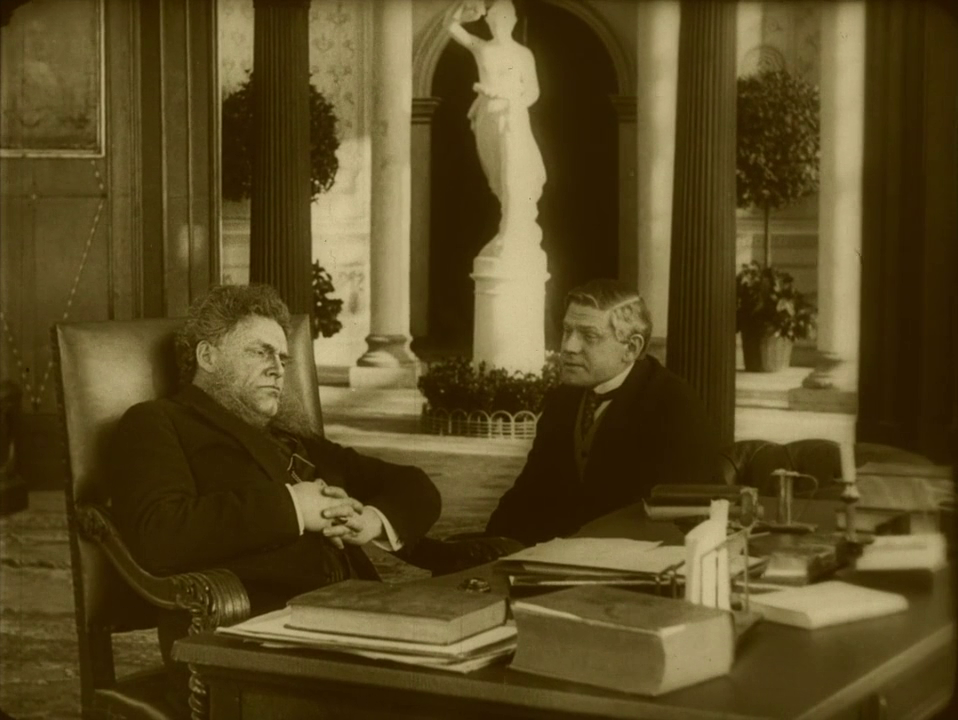
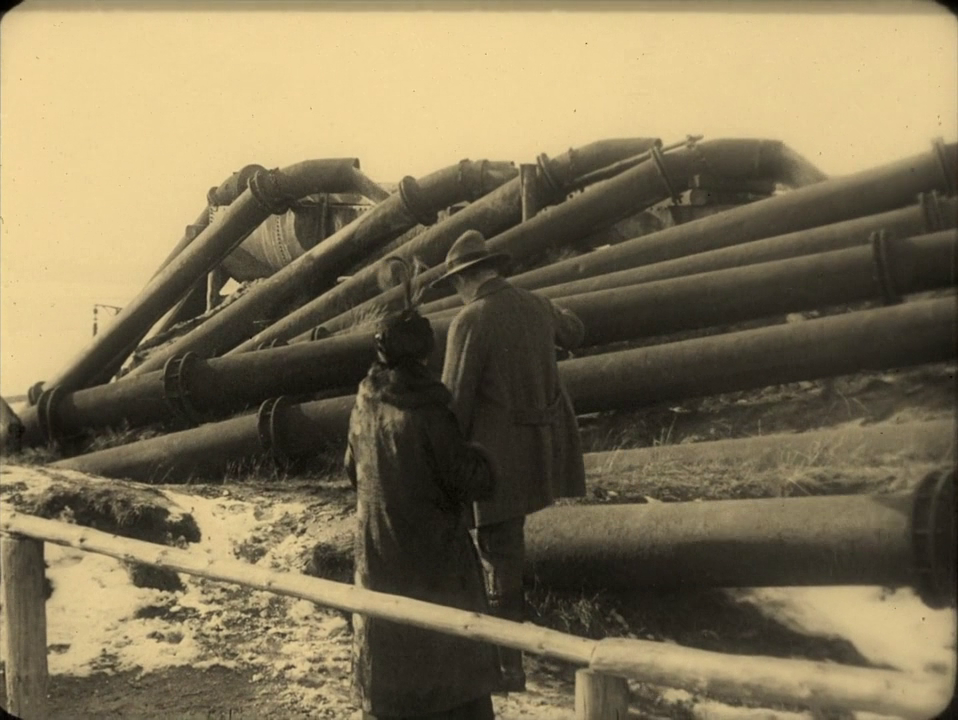
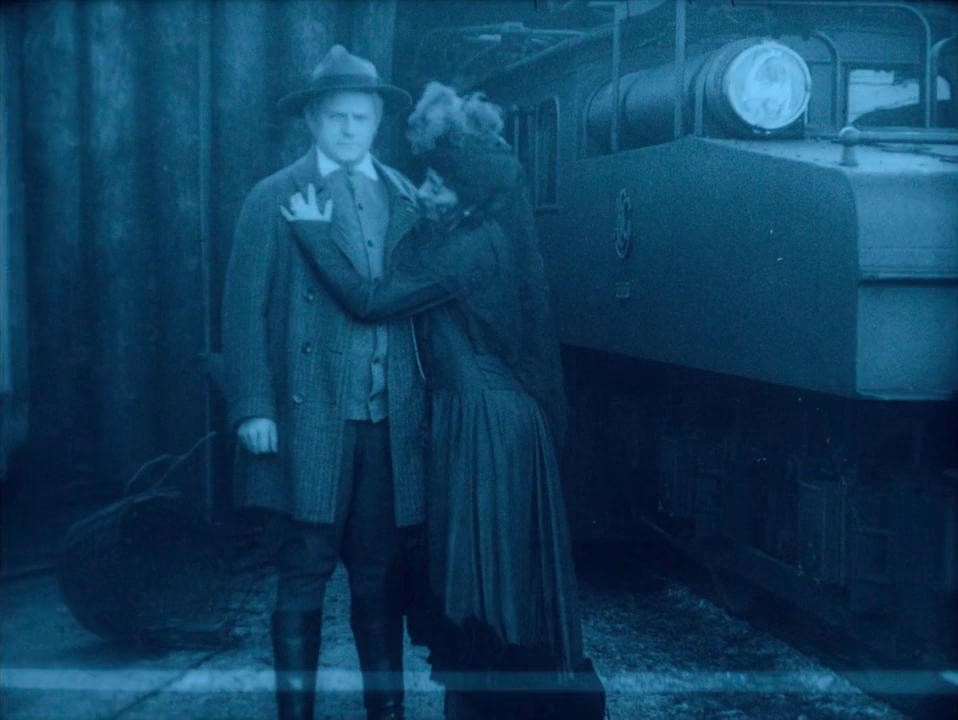
The Tunnel (1915)
Film review #522
Director: William Wauer
SYNOPSIS: Max Allan is an engineer who has the vision of building an underground tunnel that connects Europe and America. He convinces the world’s richest men to fund his venture, including Lloyd, the world’s richest man. However, there are those that do not want to see the project succeed, and will do anything to prevent it’s completion. This, and a number of setbacks, make it difficult for Max to fulfil his vision…
THOUGHTS/ANALYSIS: The Tunnel is a 1915 film based on the novel of the same name by Bernhard Kellerman. The story centres around the vision of engineer Max Allan, who wants to construct an underground tunnel between America and Europe under the Atlantic Ocean. The story of the film is fairly simple: it’s less of a traditional story centred around the characters and a plot, but more so focuses on a vision for the future and what such a project would look like. It was probably a vision of hope in a world in the midst of the first world war. Max has to persuade the billionaires of the world to fund his project, so arranges a meeting in New York to persuade them, giving an opportunity for the film to make it’s point to the billionaires as well as the audience. Being a silent film, there’s not too much room to create engaging dialogue or complex set-ups, but even in the context of the silent film era, this film feels very basic and minimal: the interstitial text describes what is going to happen in the next scene, and then it happens. It’s very literal, and as the text already has described what is going to happen, there’s little room for surprise or interest to develop.
The film does a good job of exploring the issues that would surround the making of such a project: it is described as taking nearly twenty five years to complete, which even then, that might be described as ambitious. There’s lots of footage used of masses of men hard at work digging the tunnels, and this really gives a good sense of the scope of the project. I’m not sure if the footage was shot specifically for the film, but it fits in well. There’s also a balance between the problems that the workers face, and the problems that Max faces on a personal level, and even though the characters aren’t really fleshed out in any way, you still get a sense of the problems they are facing.
The Tunnel is a vision of hope for what humanity can achieve. The ending text describes how when the tunnel was finished it brought about peace and prosperity for all: that might be a bit too simple of an ending, but it’s definitely the message that the film is going for. Specifically, the issue of people being scared of technological progress will certainly make enemies of those still rooted in tradition, but that should not stop people with a vision. As you might expect, there’s a few instances of problematic portrayals of non-white/European people and cultures, but these are limited. Though the film is dated and is not very entertaining, it does have a message regarding progress that is still relevant, and only for that reason it would be worth a watch.
